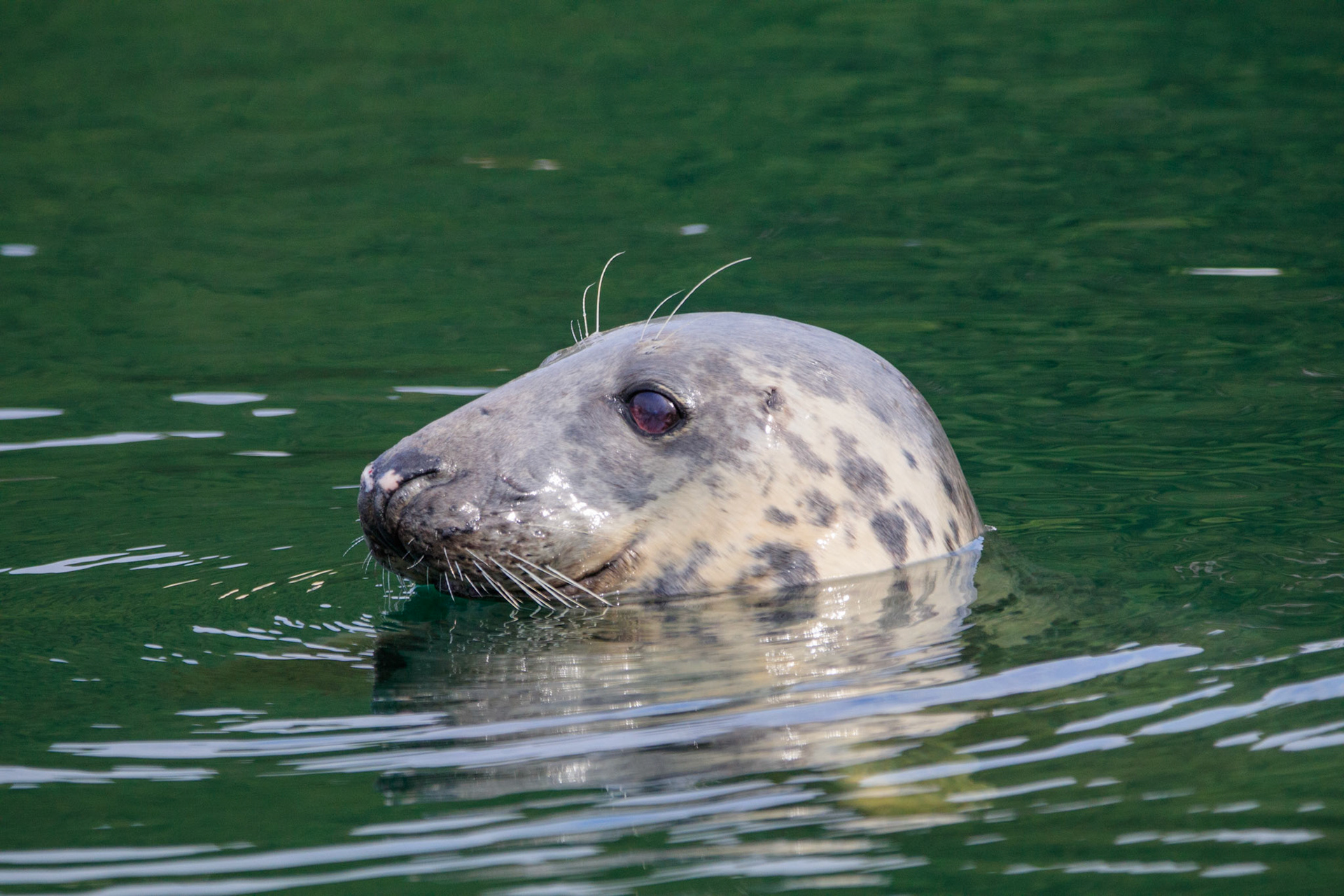27 June to 14 July
We escaped Loch Drambuie at 0800 on Monday 27 June. It was misty and damp so we motored over to Tobermory hoping to pick up a mooring as we needed to get ashore for a leg stretch. It is a wide and sheltered harbour and very popular with sailors as a launching point for heading further North from Mull. It is one of the prettiest and well known small towns in Scotland and has a well-stocked and busy Co-op, at least 4 taverns offering food and very good IPA, and a marvellous fish and chip van which we missed as it was raining too hard! When the sun came out we had a lovely walk out to Rubha nan Gall lighthouse, one of over 200 located around Scotland’s rugged and treacherous 6000 miles of coastline. When it was built in 1857 it had a team of lighthouse keepers and their families, keeping it flashing correctly at night, but in May 2012 once the light had been made automatic the original Fresnel lens from the lantern was replaced with an energy efficient LED lamp. It is one of only 2 lighthouses accessed by a bridge.Our thanks go to the Northern Lighthouse Board, set up originally in 1786 with a mission statement “To deliver a reliable, efficient and cost-effective Aids to Navigation service for the benefit and safety of all Mariners”. Lighthouses are so useful, giving us a real sense of security knowing exactly where we are. www.nlb.org.uk
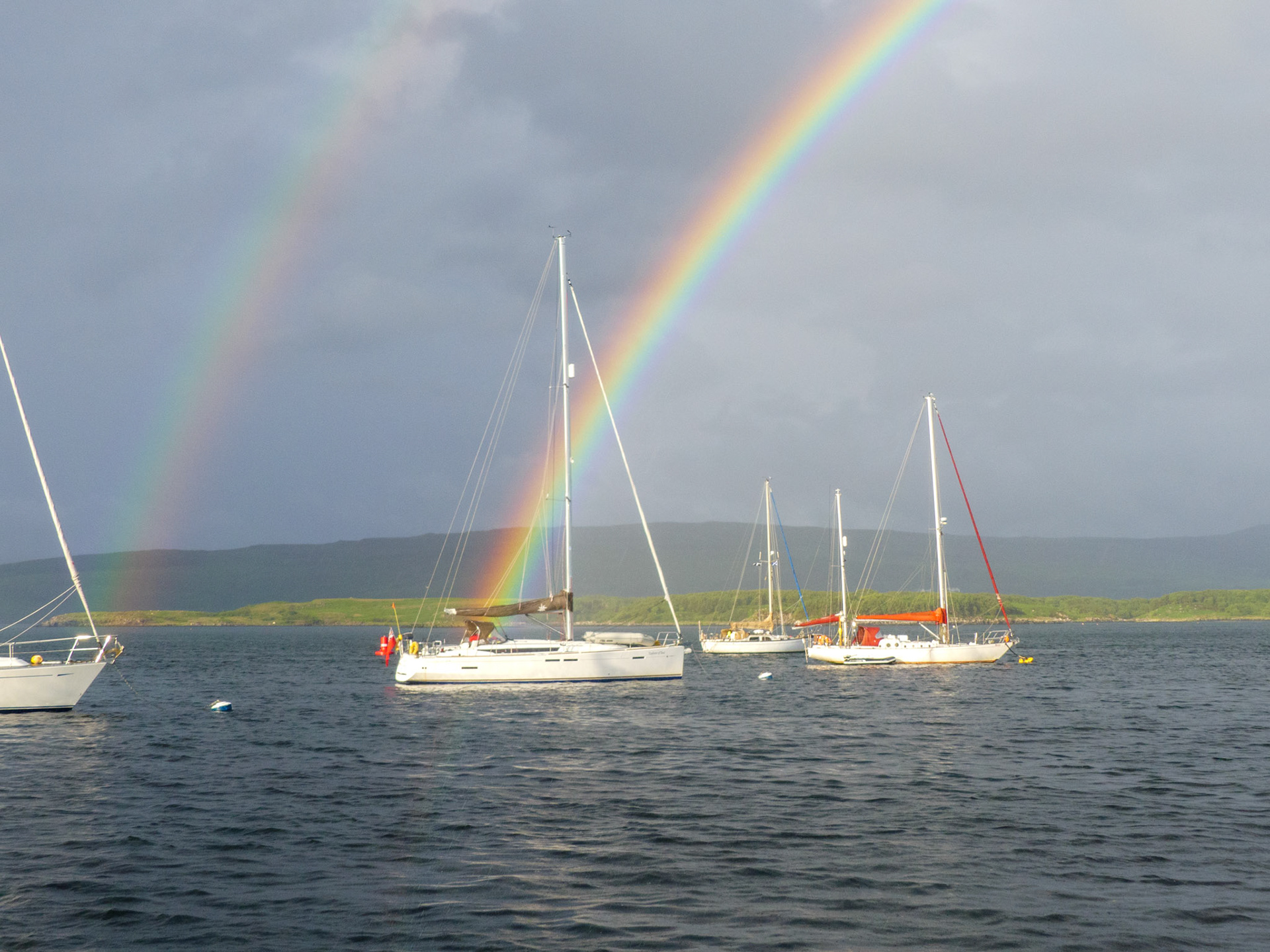

After a couple of days we travelled South West through the Sound of Mull, determined this time to benefit from the tidal flows and avoid the overfalls that we hit on the way up. Hmm didn’t quite happen that way but nothing too drastic as we rushed past Castle Duart down the Firth of Lorne and into Puilladobhrain (Pool of the Otter). A pretty anchorage South of Oban on the island of Seil. We were lucky and anchored at the head of the loch in super strong mud. We took the dinghy to the shore and walked over the hill to the famous pub, Tigh-an-Truish which means House of the Trousers. When highland dress was banned by law after the Jacobite Rebellion, shore going islanders swapped their kilts for a pair of breeks. Hence the name, however it could just mean it was a tailors! The pub sits beside the Clachan Bridge also known as the Bridge over the Atlantic. The bridge was built in 1792/3 and spans the narrow, shallow and tidal Clachan Sound.
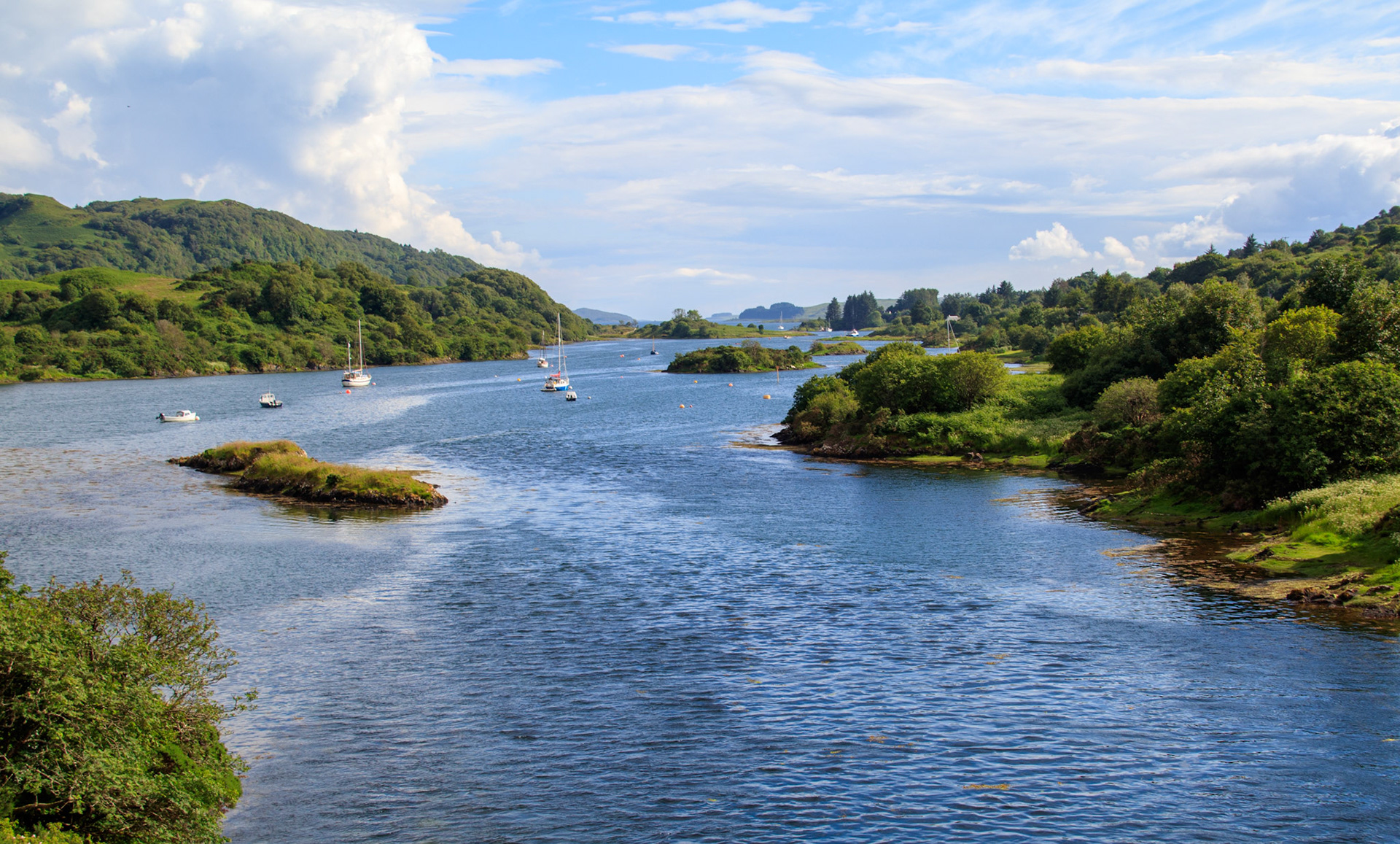
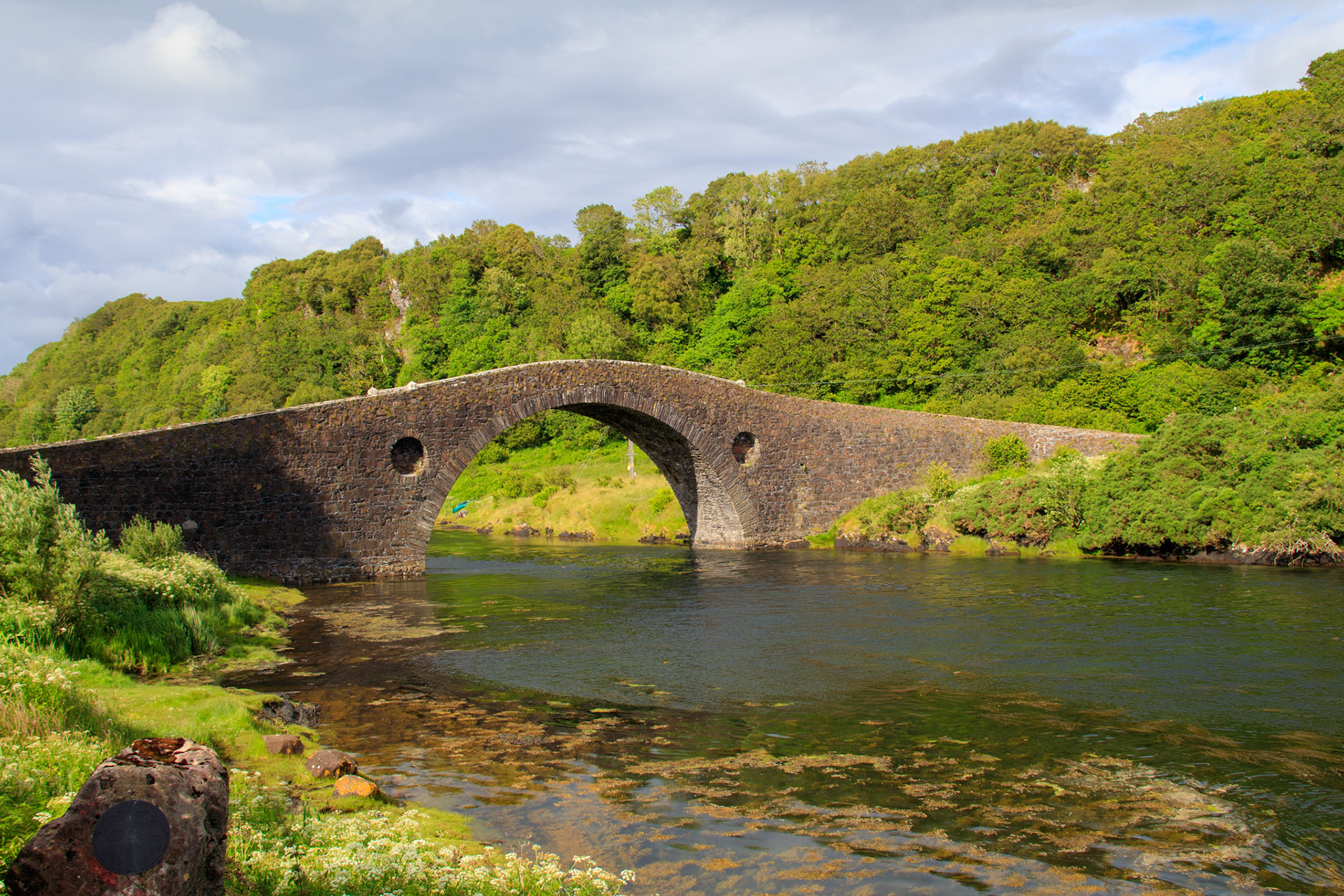
Bridge over the Atlantic (Clachan Bridge)

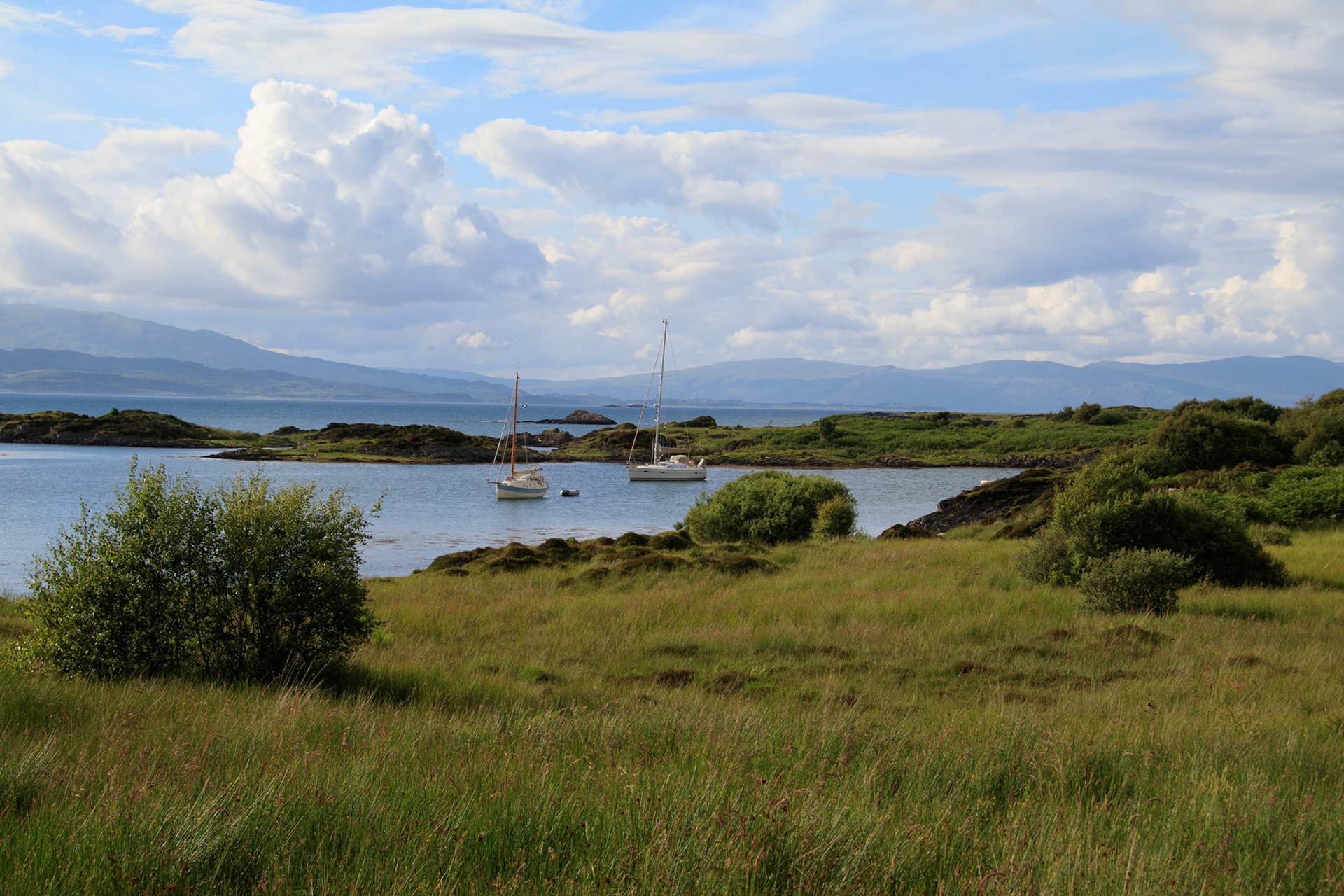
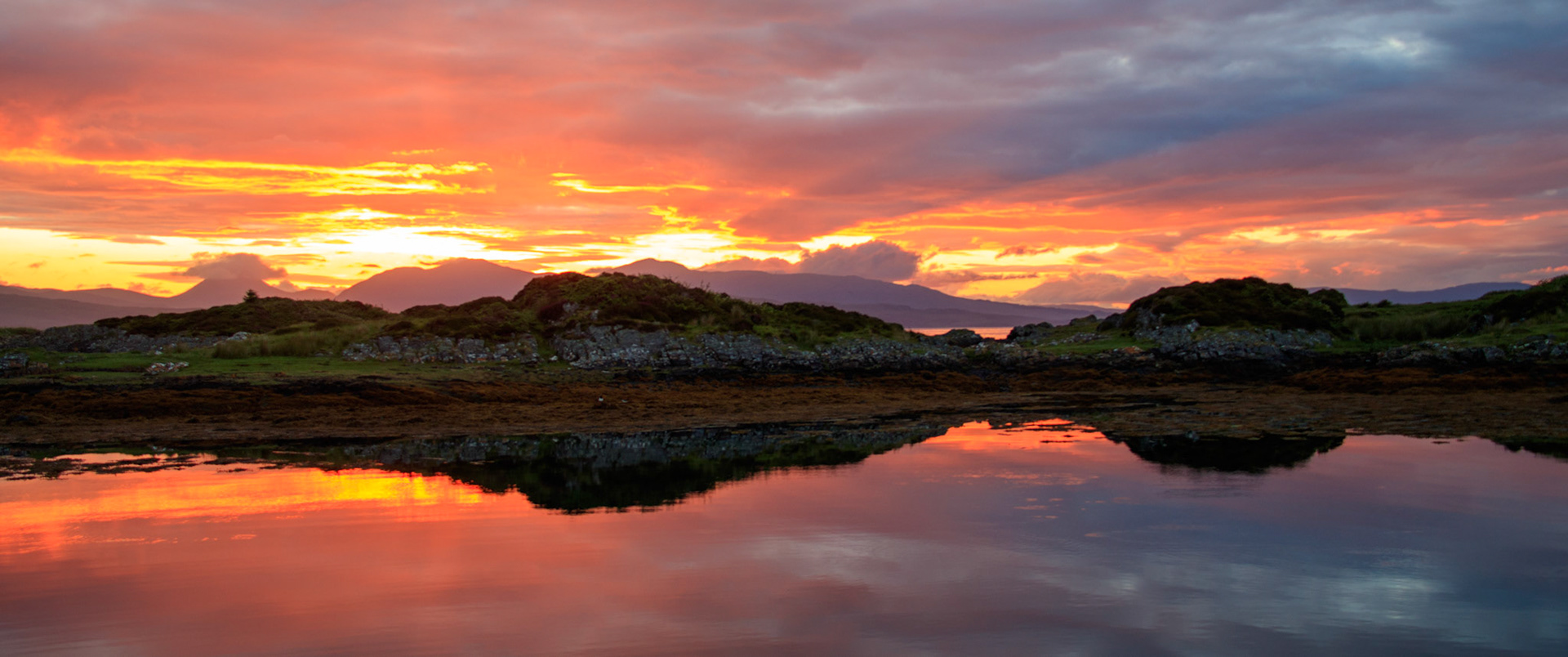

Puilladobhrain
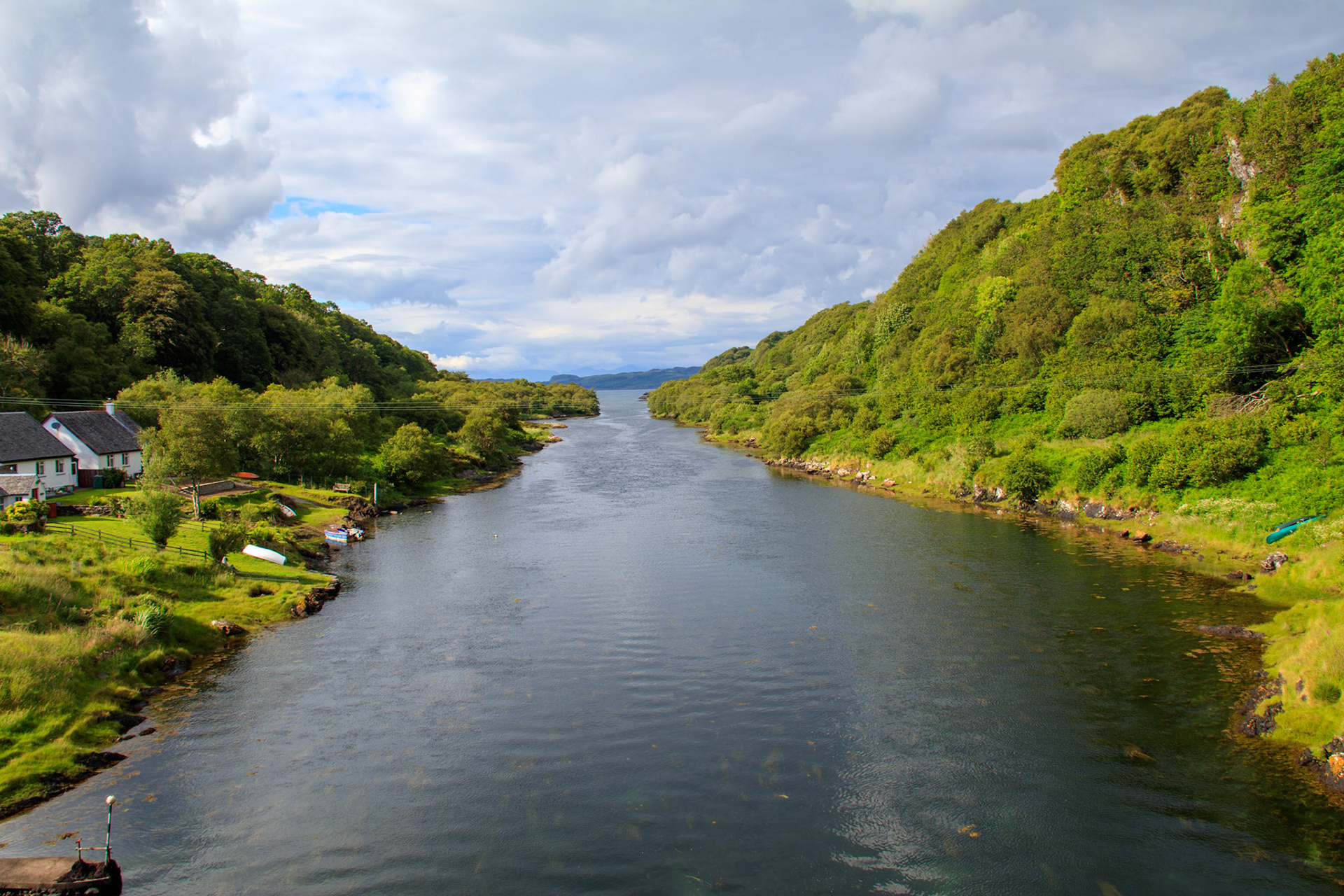
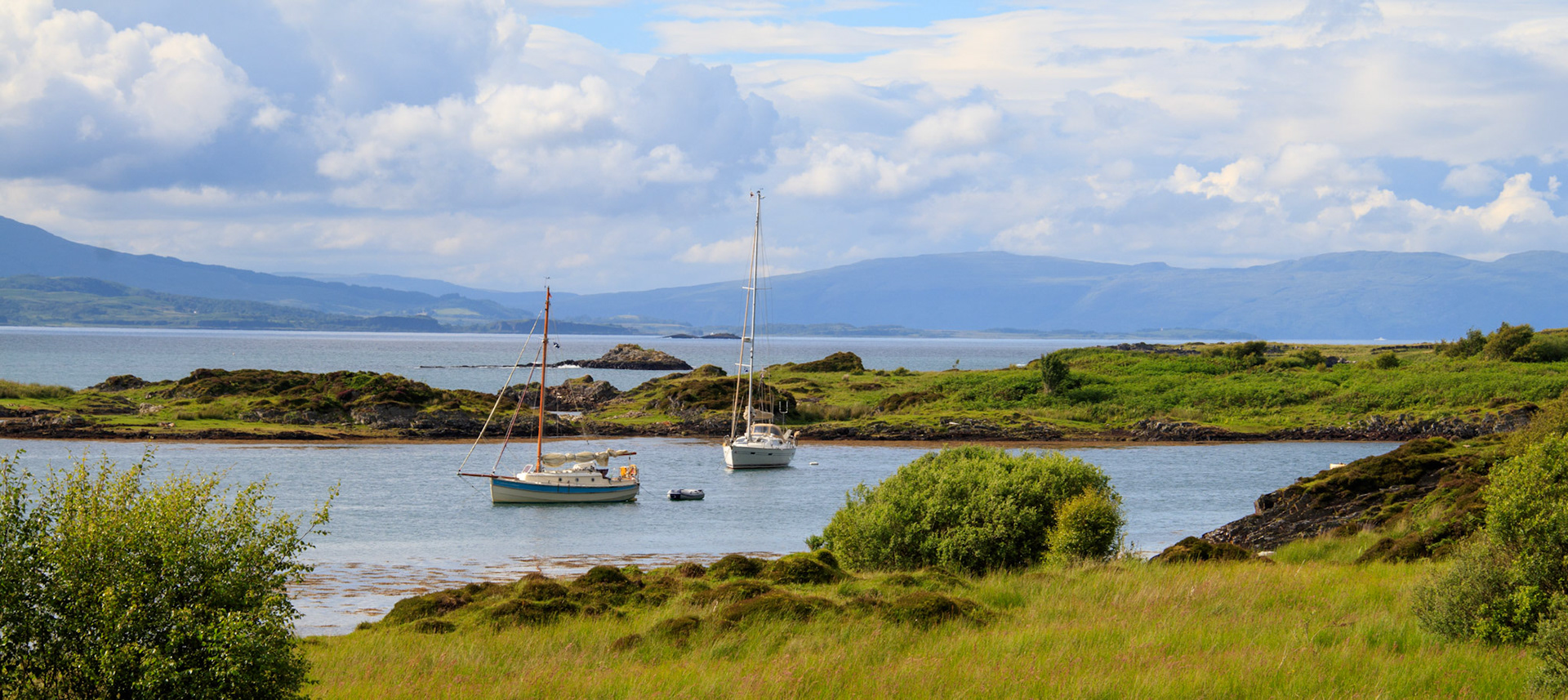
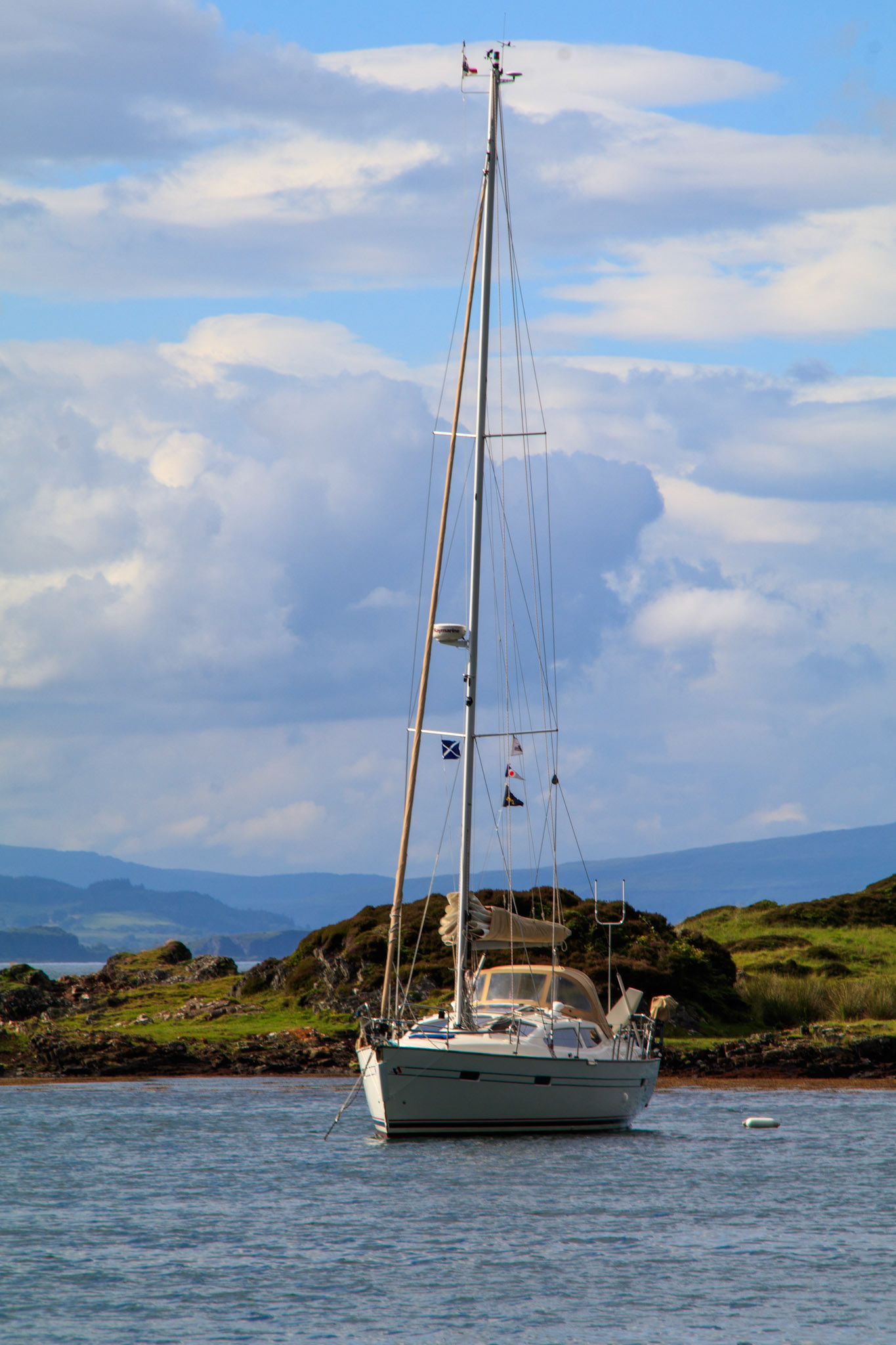
This is my territory
Seil itself is renowned for its slate which has been quarried for nearly 3 centuries and the next day we walked to the South of the island via Balvicar Bay. The villages are picturesque and were built by the landowner for the quarrymen and their families. A little island on the south west side of Seil is Easdale. It was the main and deepest quarry in the area but when it was mined to 75mtres in November 1881 a violent storm broke through the narrow slate walls and flooded the mine. Thankfully no-one lost their life that night but 240 quarrymen lost their livelihoods and severe poverty struck the island. The beach is covered in slate and the world water-skimming championships are held there annually. You can see why – there is plenty of ammunition!
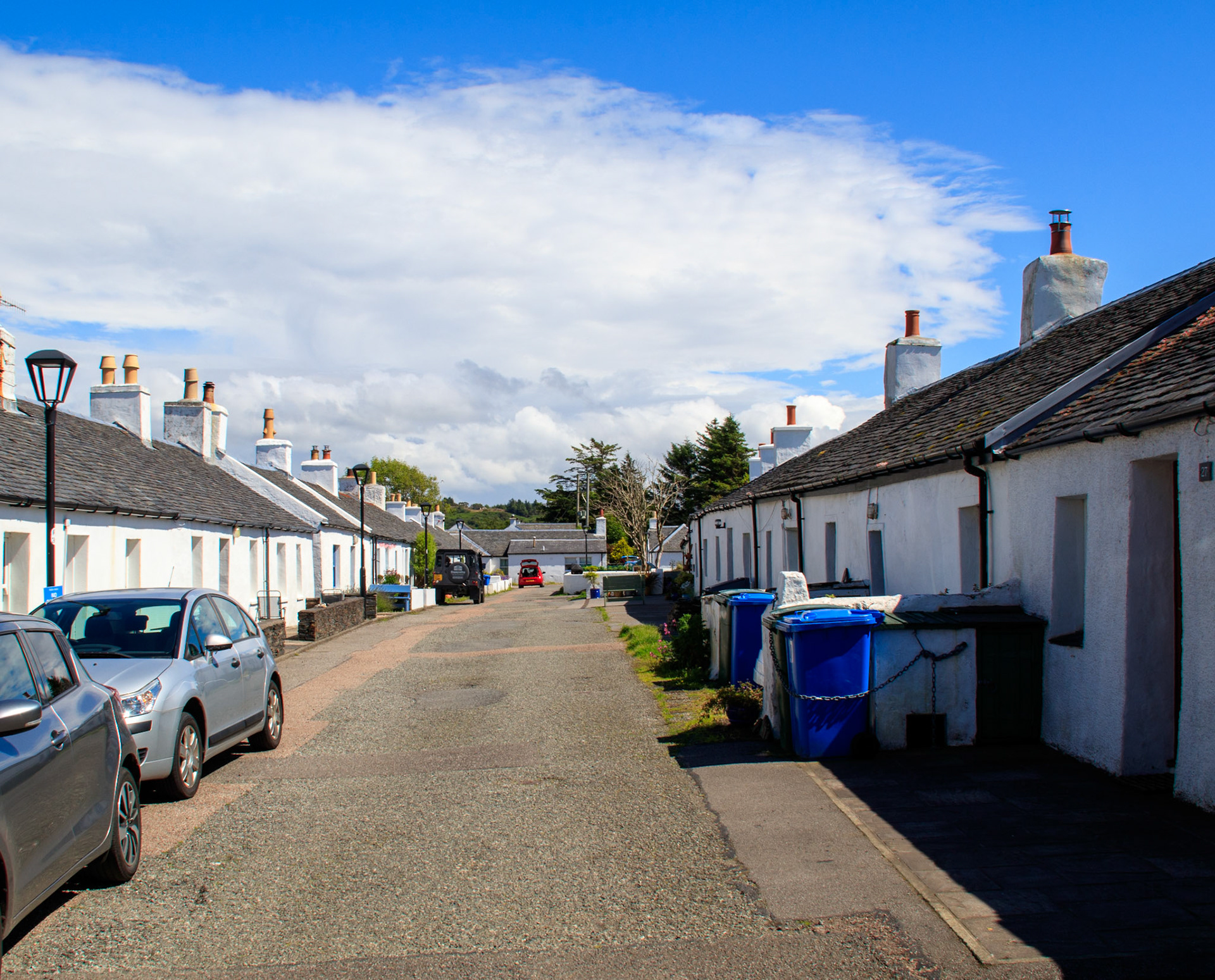
Easdale cottages

You can eat lunch there. i am staying here
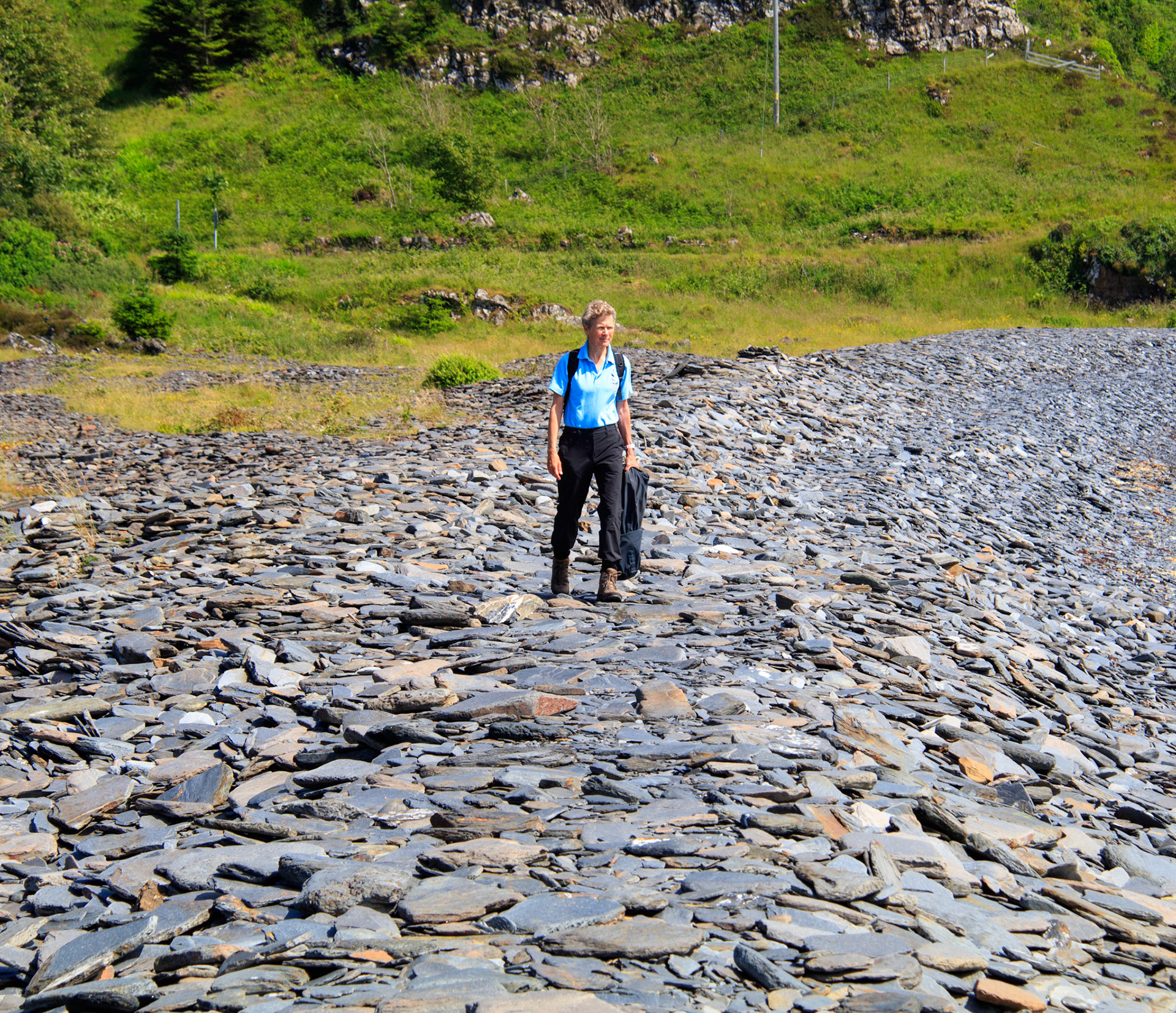

Easdale
After a delightful couple of nights at anchor in Puilladobhrain (pronounced Poldoran) we set off for Loch Feochan. A loch with a fearsome reputation for swift flowing waters through a narrow and drying entrance gave us plenty to concentrate on. The wonderful harbourmaster, Colin, gave us the visitors buoy just off the pontoon and we found ourselves moored next to another Southerly 115. However the owners were not there but we met a delightful couple with a beautiful old wooden pilot house ketch called Lana Belle. We shared a Gin or 2 on our return from the showers that night and the next evening they joined us for a glass or 2 of wine. It is wonderful how easy it is to share stories and tales with others who have the same interests.
We had walked out to the southern end of the Loch to see just how fast and shallow the waters became if timings were ignored. They were extremely fast and shallow as you can see from the photo of Nick standing on the rocks of the port hand marker. We also discovered a fabulous pub in the middle of nowhere called The Barn. It’s a 40 minute walk from the harbour and also serves good pub food. It really is tucked up in the hills. On our way back for the first visit to the pub we met an ex naval diver on his farm who had restored an ancient chapel and the graveyard of Clan MacDougall in Kilbride. This tiny village was first mentioned in an historical document in 1249 and has retained a certain amount of fame as it is the burial ground of the unlucky Chief Iain Cair MacDougall who chose the wrong side to be on in the Jacobean Rebellion. It provides not only the history of the MacDougal family but also that of local folk, sailors, wandering musicians and farmers. The marina in Loch Feochan, Ardorran, has showers and a great laundry facility. The walks are plentiful and we saw otters and seals.
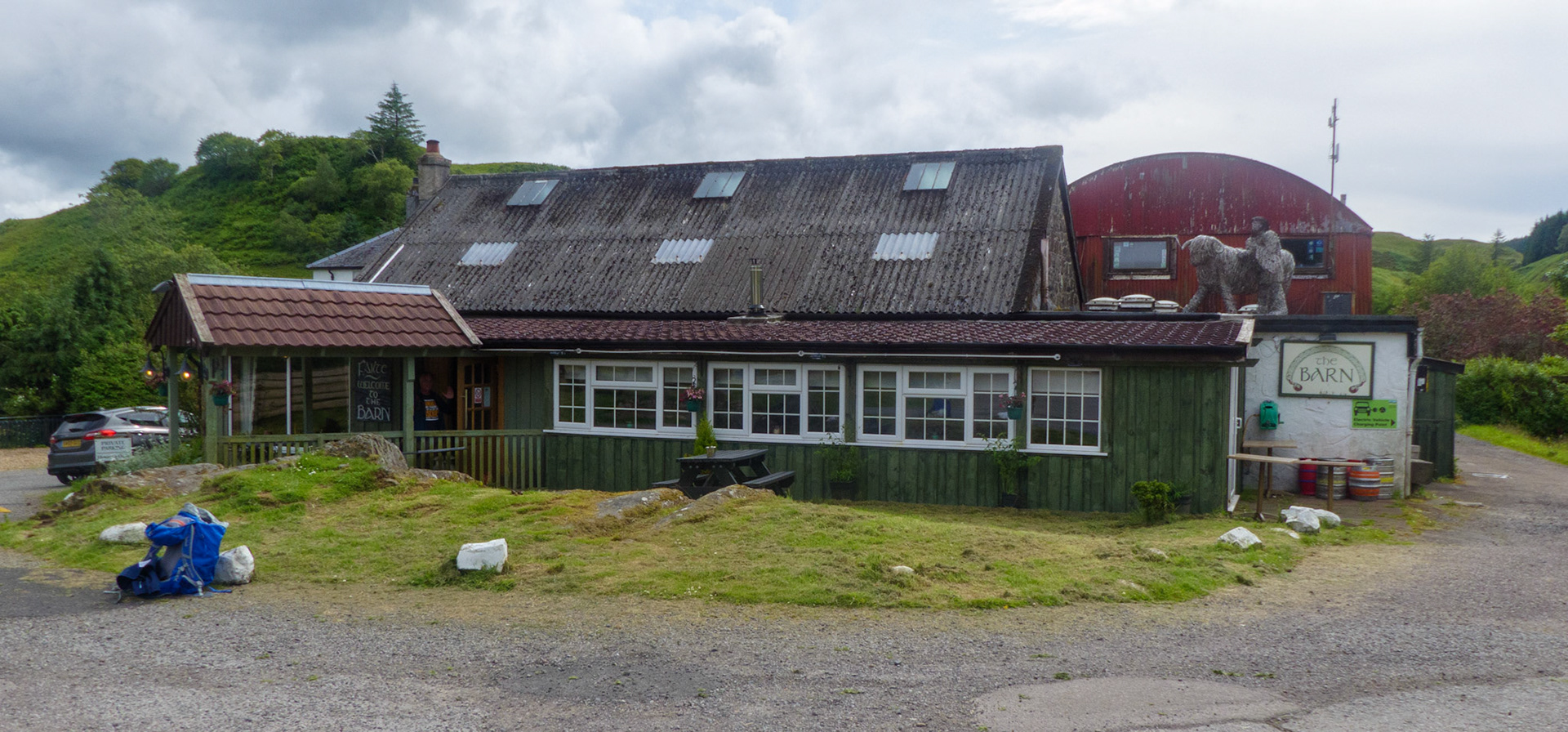
The Barn
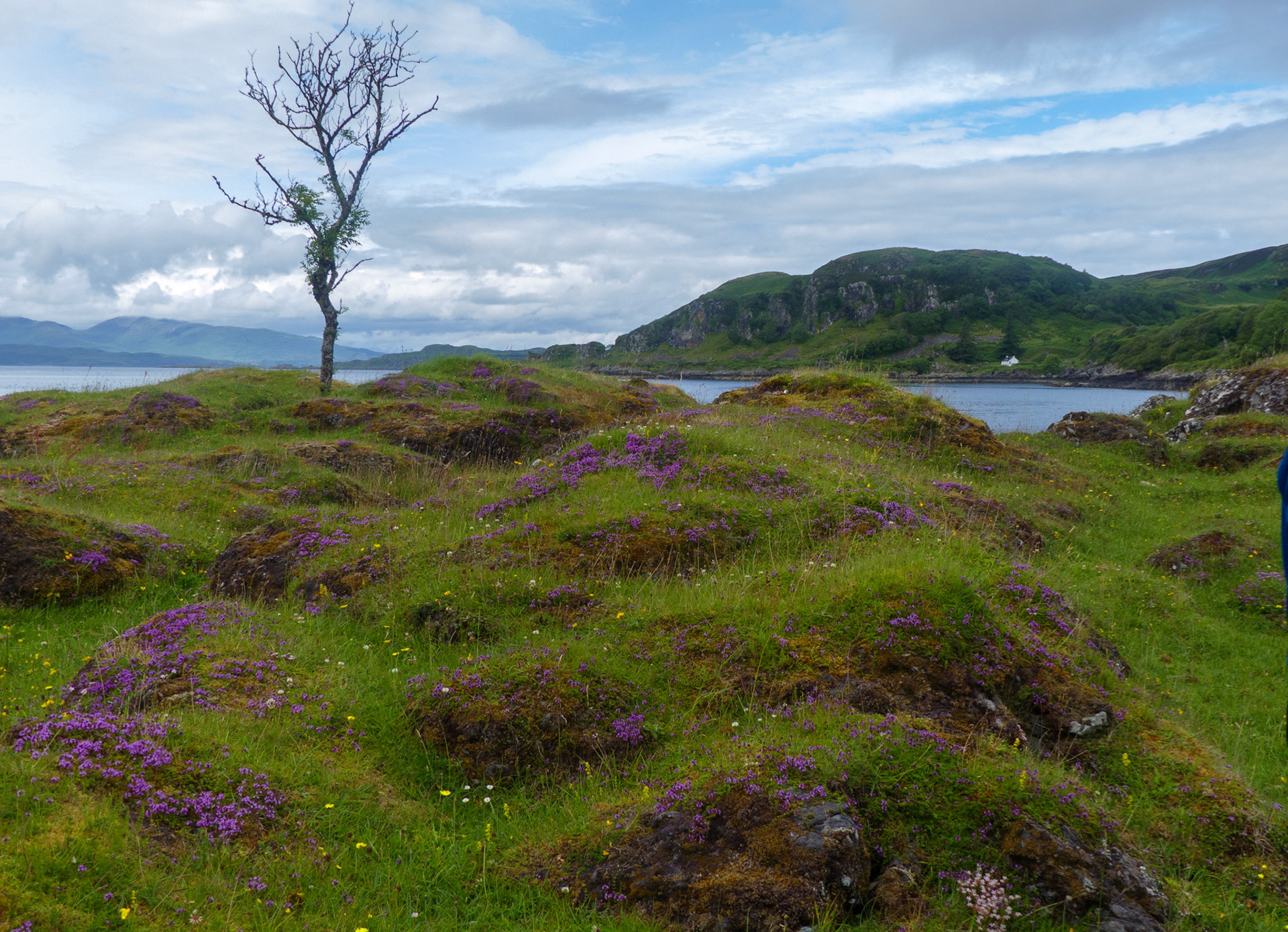
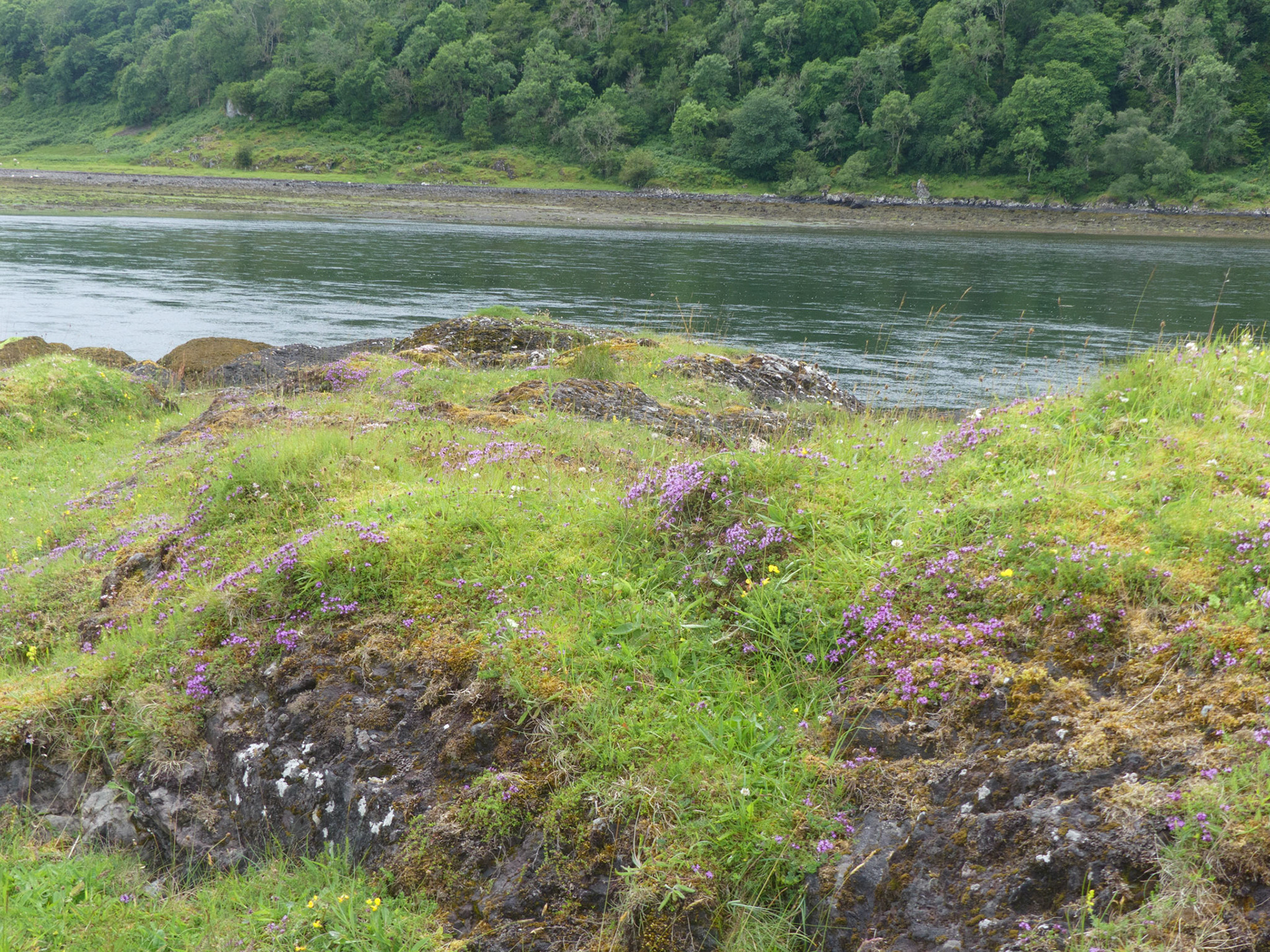
The narrow entrance
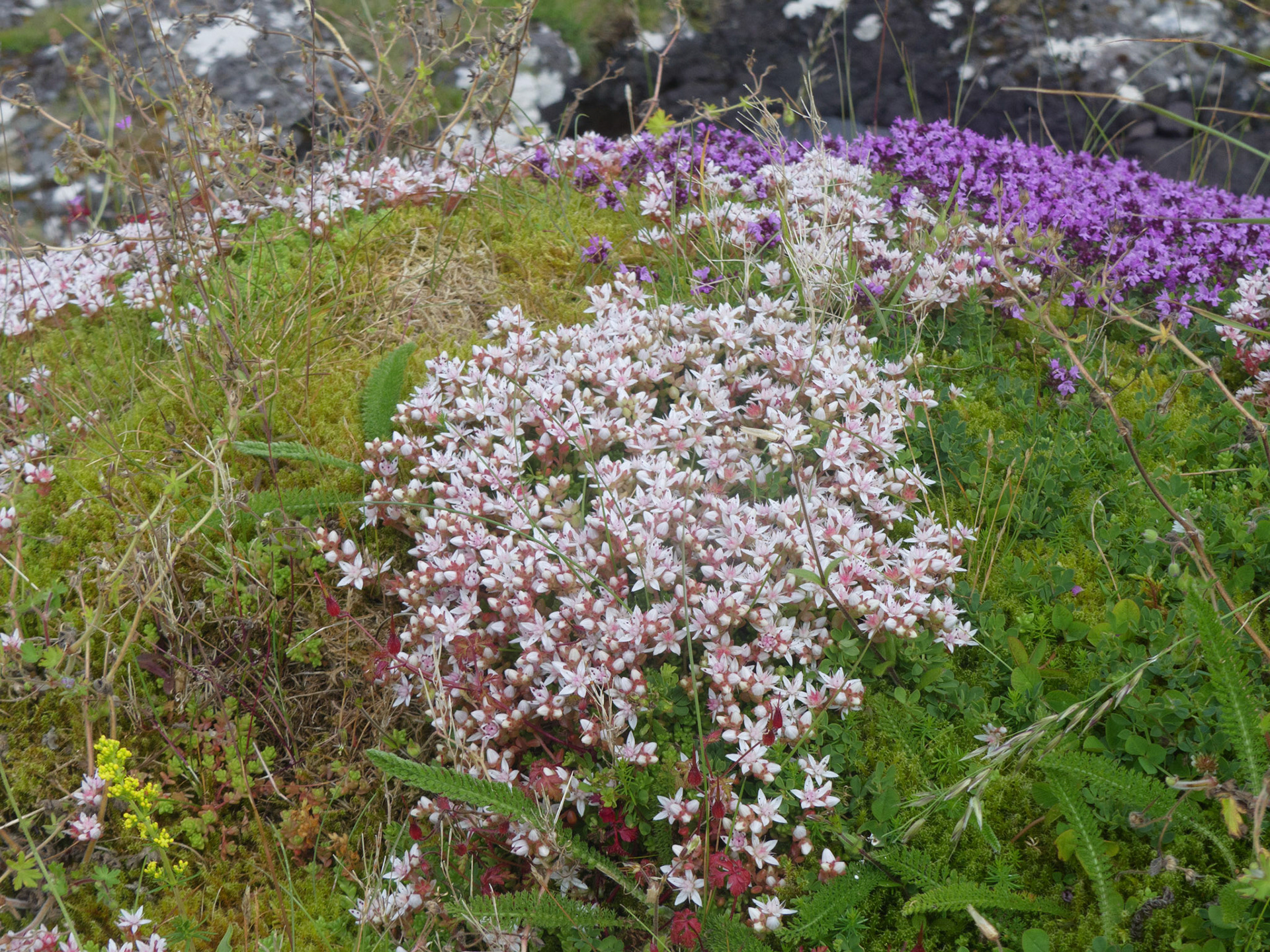

Note the Green Buoy at low water
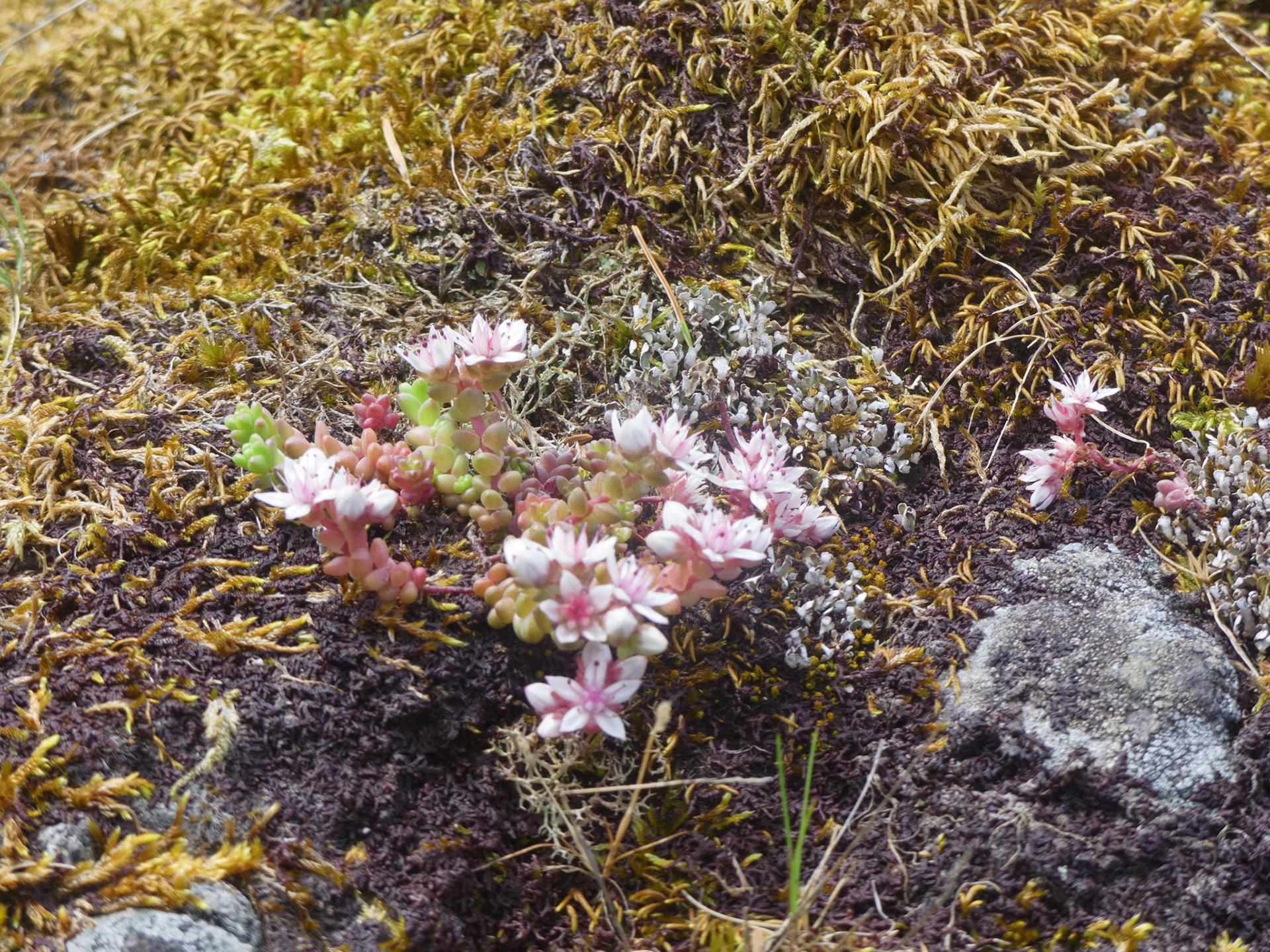

10 metres from the Pontoon
Sunday 3 July saw us motor sail up Kerrera sound to the Oban transit marina to stock up on food and other essentials. We used the short stay option as we were heading across to Kerrera to stay for a few days. Nick headed south on Monday 4th July via ferry, the scenic rail route to Glasgow, a train to Euston and eventually to New Milton where he was met by Peter Fisher who took him to collect our car from Lisa’s farm. The car started first time and once Nick recalled how to drive a car rather than the boat he headed off to stay with Caroline and Ross in Fareham. I stayed on board to look after the boat, read a book or 2 and explore the beautiful island of Kerrera. The marina is good and now has a bar and a very popular bistro on site. Gas, a laundrette and showers too are all available and a 5minute walk away is an honesty box farm shop selling local produce (beef, pork, venison and eggs) and other essentials.
My walk to the Southern end of the island took me past the turreted fairytale ruins of Gylen Castle. Built in 1587 by the Clan MacDougall it has a freshwater spring underneath it and was the repository for the MacDougalls famous Brooch of Lorn. An 11cm disc of Celtic silver with filigree ornament and a central dome concealing a cavity for sacred relics. It is said to have belonged to Bruce but it was stollen at the sacking of Gylen Castle in 1647 and was thought lost until returned by General Sir Duncan Campbell in 1825 whose ancestor Campbell of Inverawe had looted it. So many wars and sackings between the various Clans and Alliances – I’m surprised at how bloodthirsty my ancestors were!

Oops how to get over this?
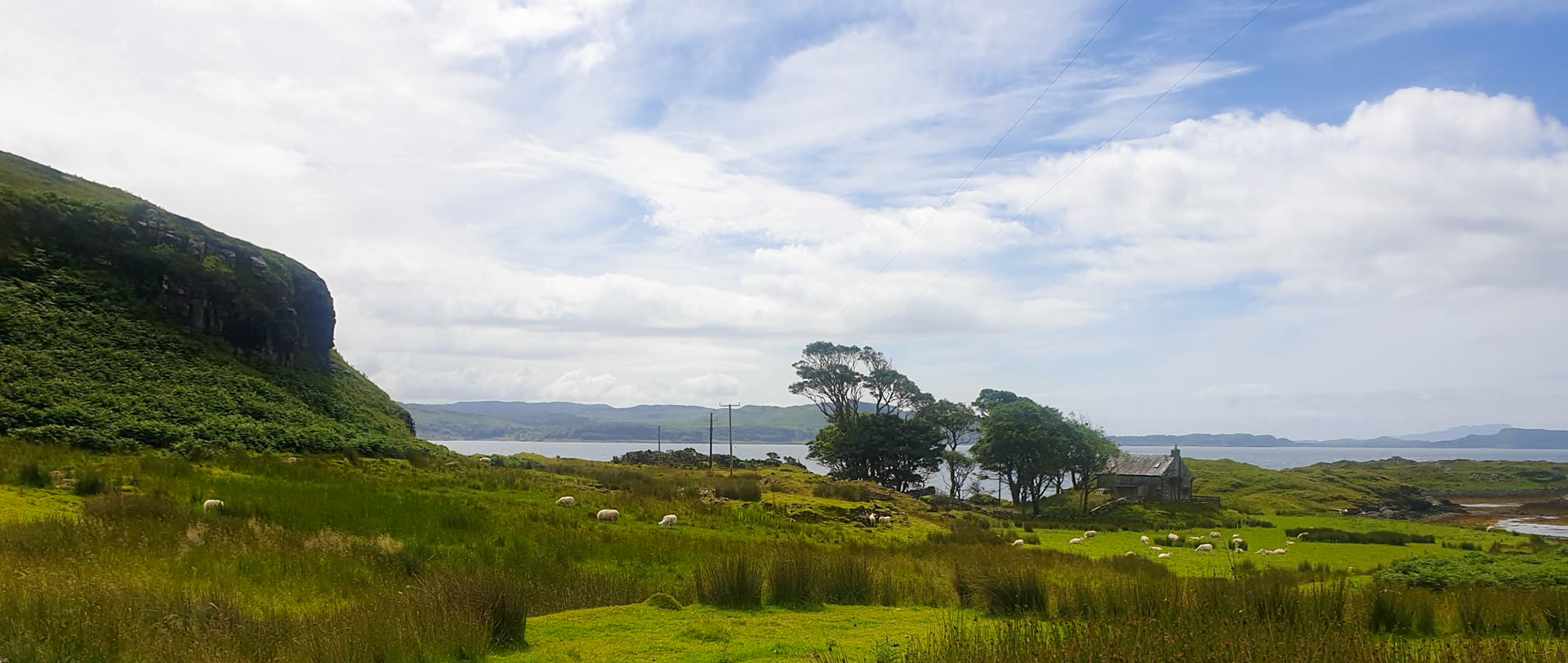
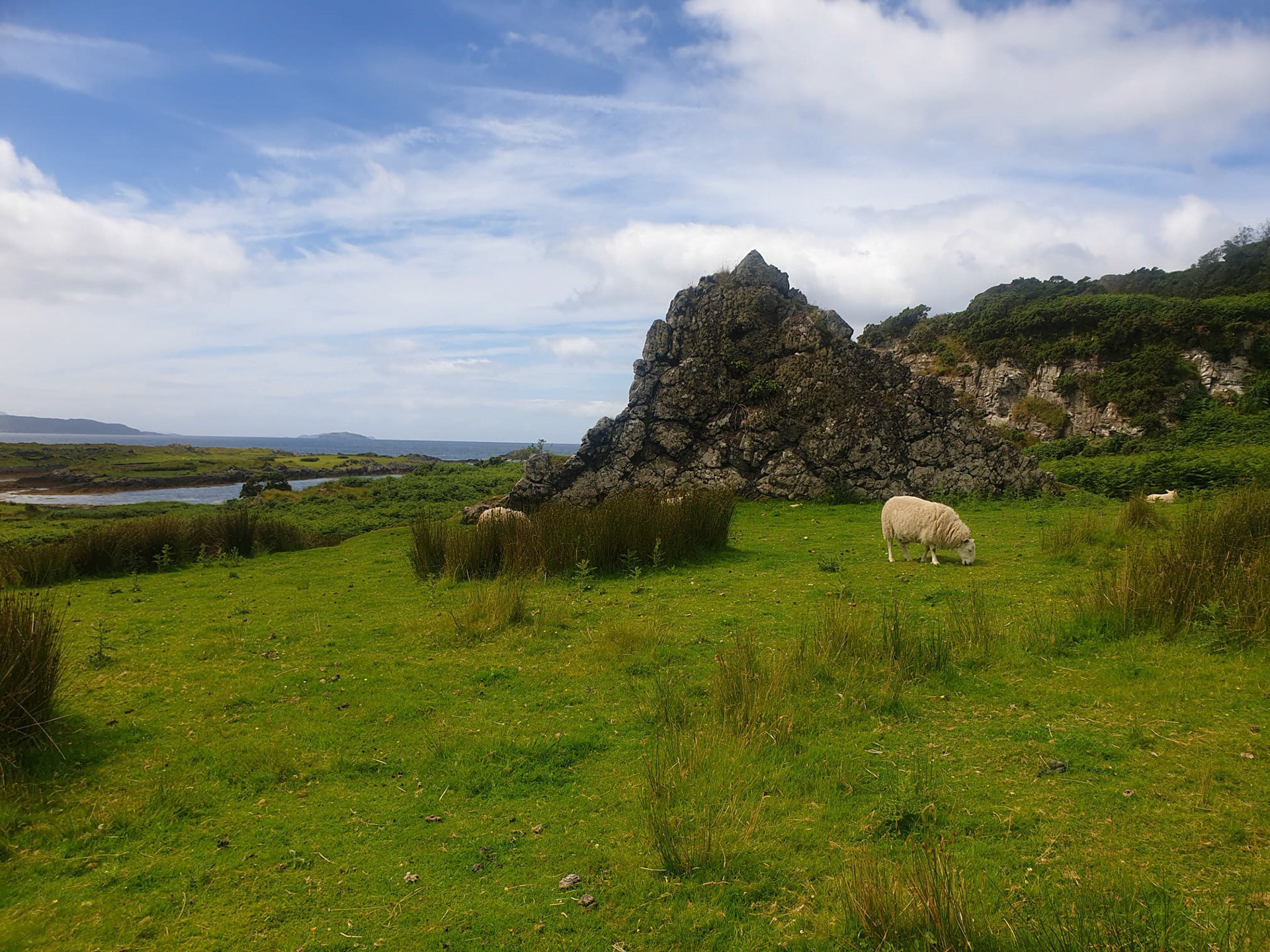
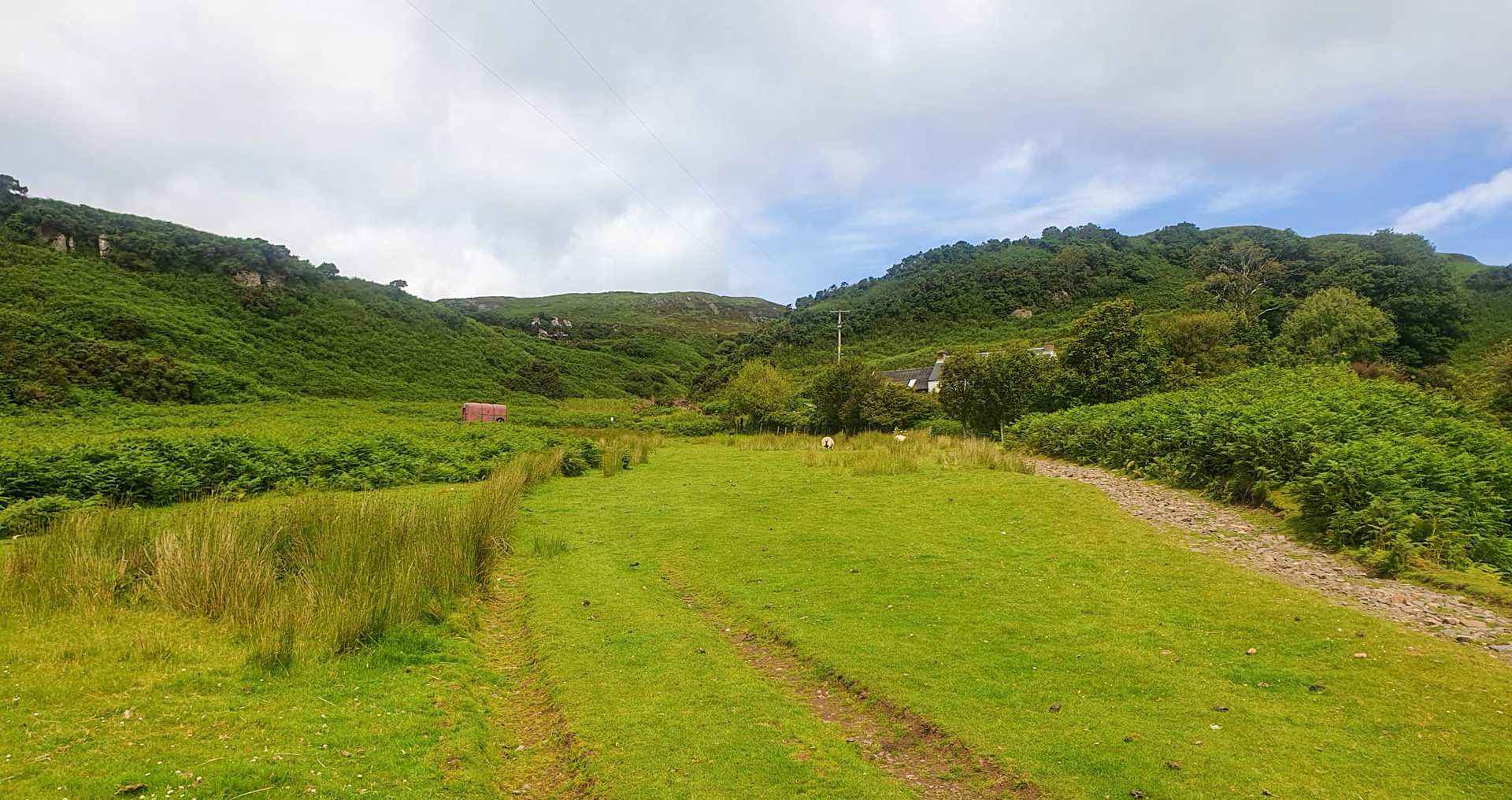
The path is somewhere up there
With Nick returned safely and the car parked at Ardfern Marina where we will leave the boat to overwinter, we left Kerrera and sailed back up the Sound of Mull to Tobermory to stock up again – I cannot believe how much food we eat – before heading around Ardnamurchan Point and places North. It was a beautiful sail with Dolphins , Guillimots and razorbills keeping us company. Ardnamurchan, the westernmost point of the British mainland, has a fearsome reputation but we rounded in benign conditions and headed to the tricky entrance of Loch Moidart. With twists and turns of 90 degrees, a curious group of welcoming seals, and scraping by some fearsome rocks, we followed the Antares guidance to the metre and found ourselves in a truly beautiful and isolated anchorage. The holding was in sand and we spent 2 nights in this idyllic location. At breakfast on Sunday we were entertained by 2 sea otters busy cracking and eating the abundant mussels on the island opposite. We packed a picnic and followed the Silver path to the head of Loch Moidart. This Silver path is so called because as it was constructed along the lochside a haul of silver bullion was found. Don’t know who got to keep that! I also won the competition to collect the most tics!
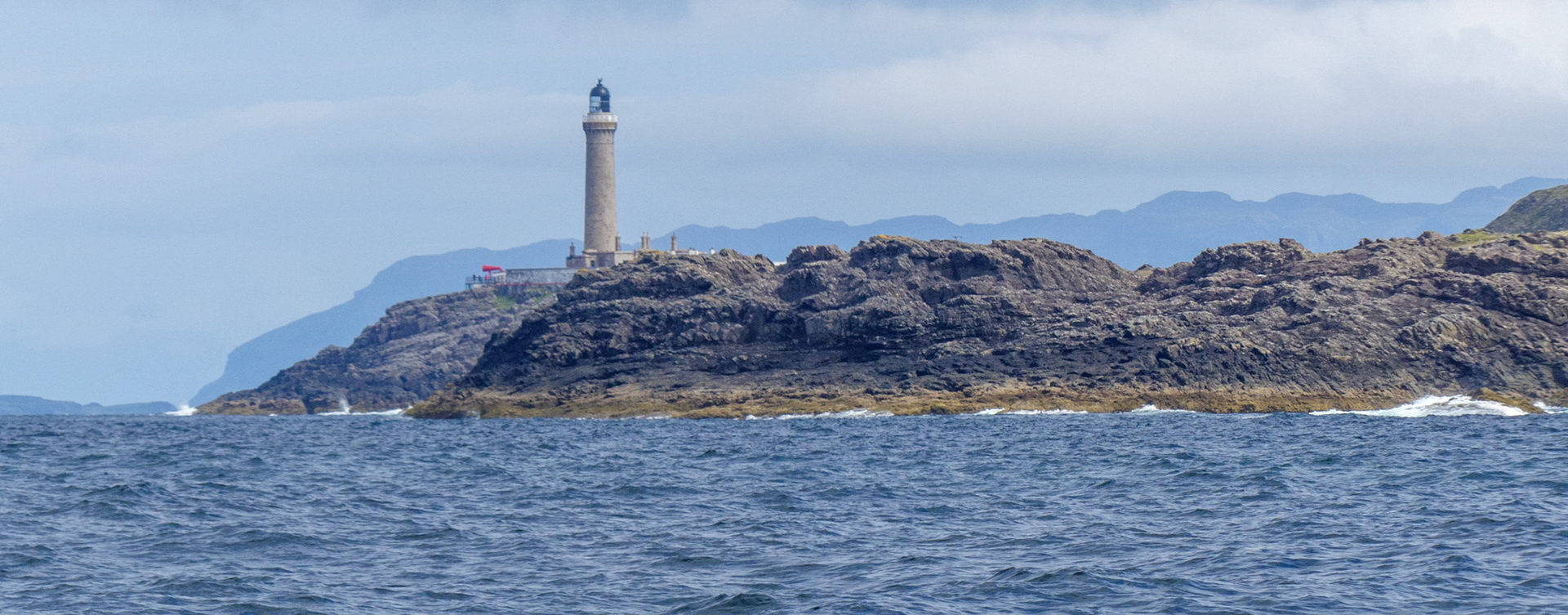
Ardnamurchan Point

In Transit
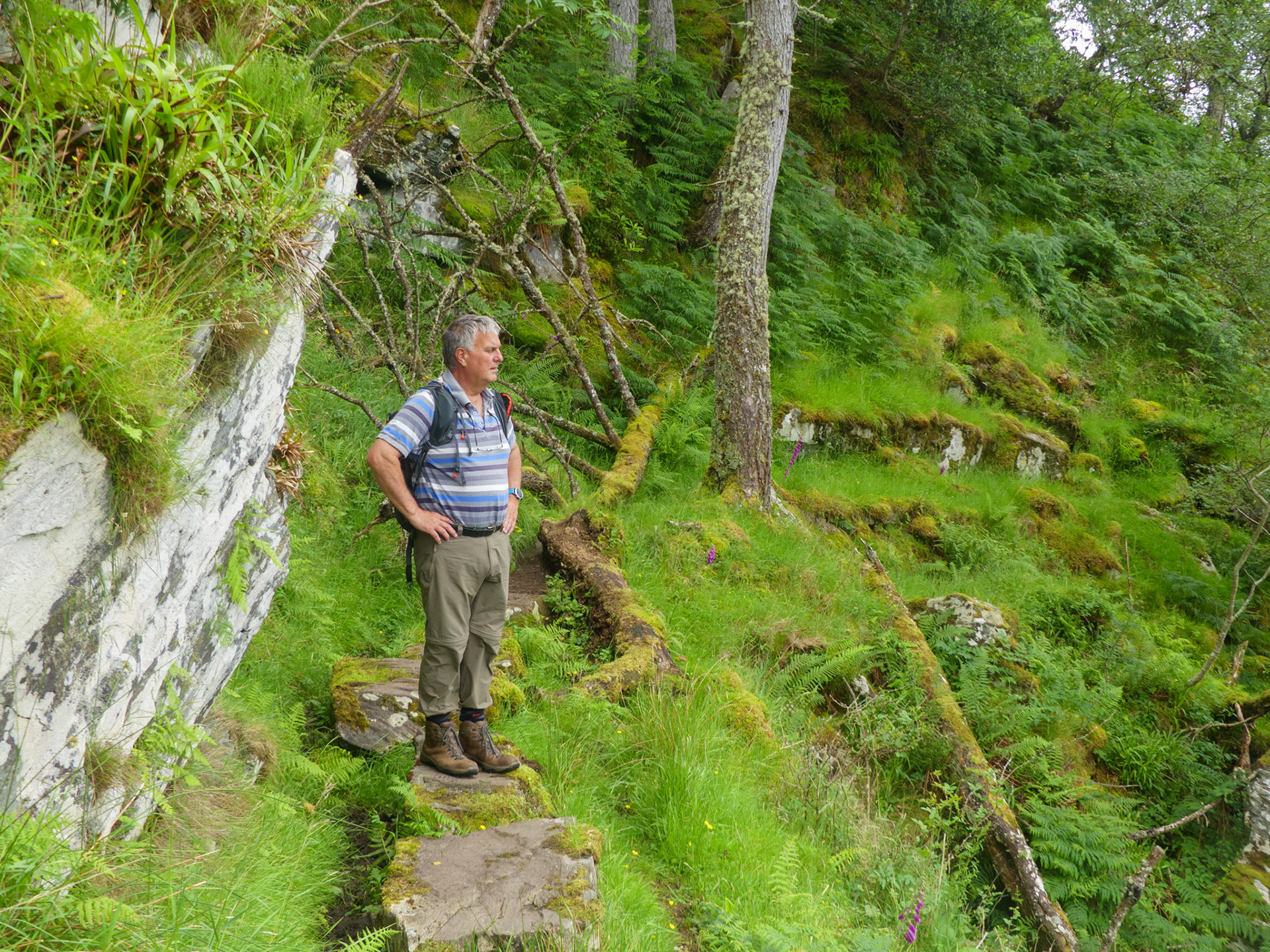
The Silver Path
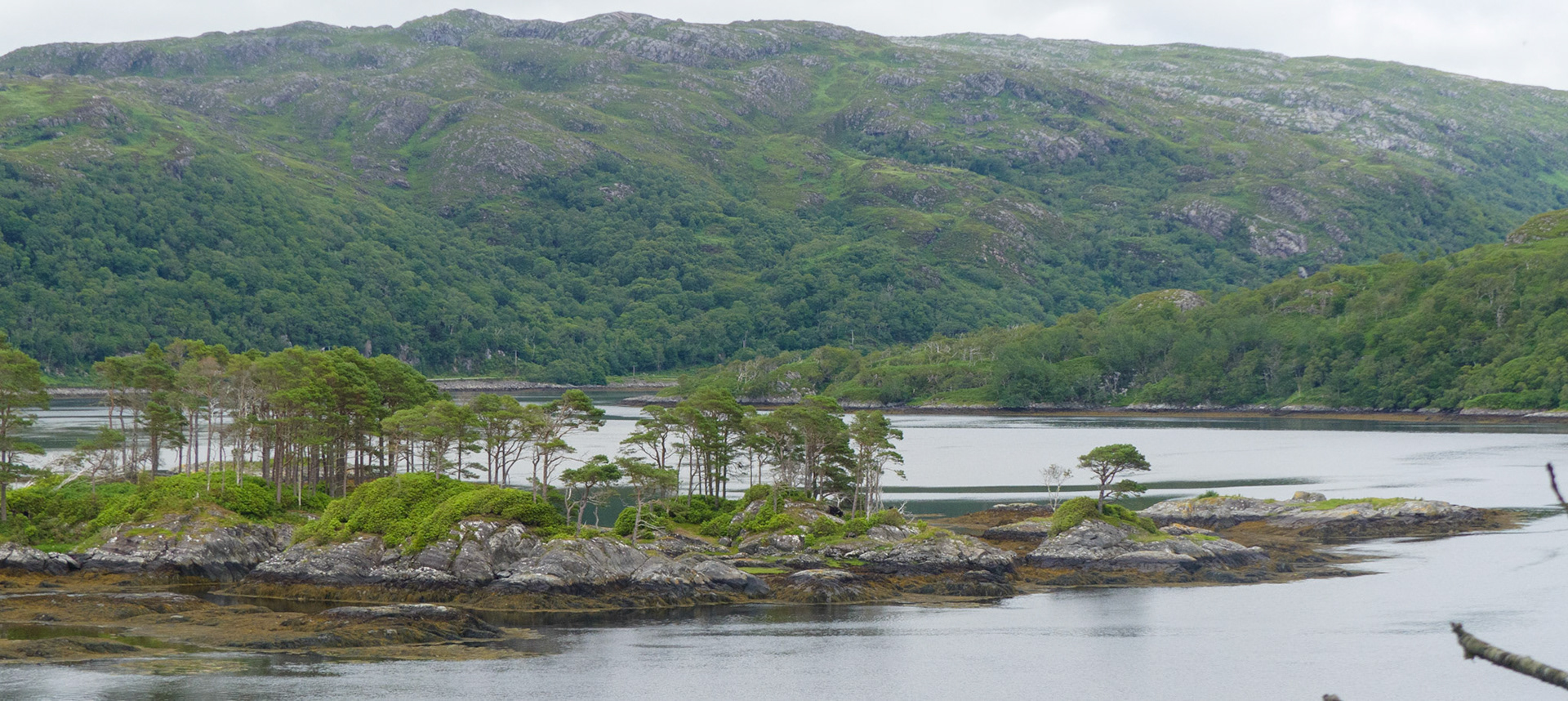
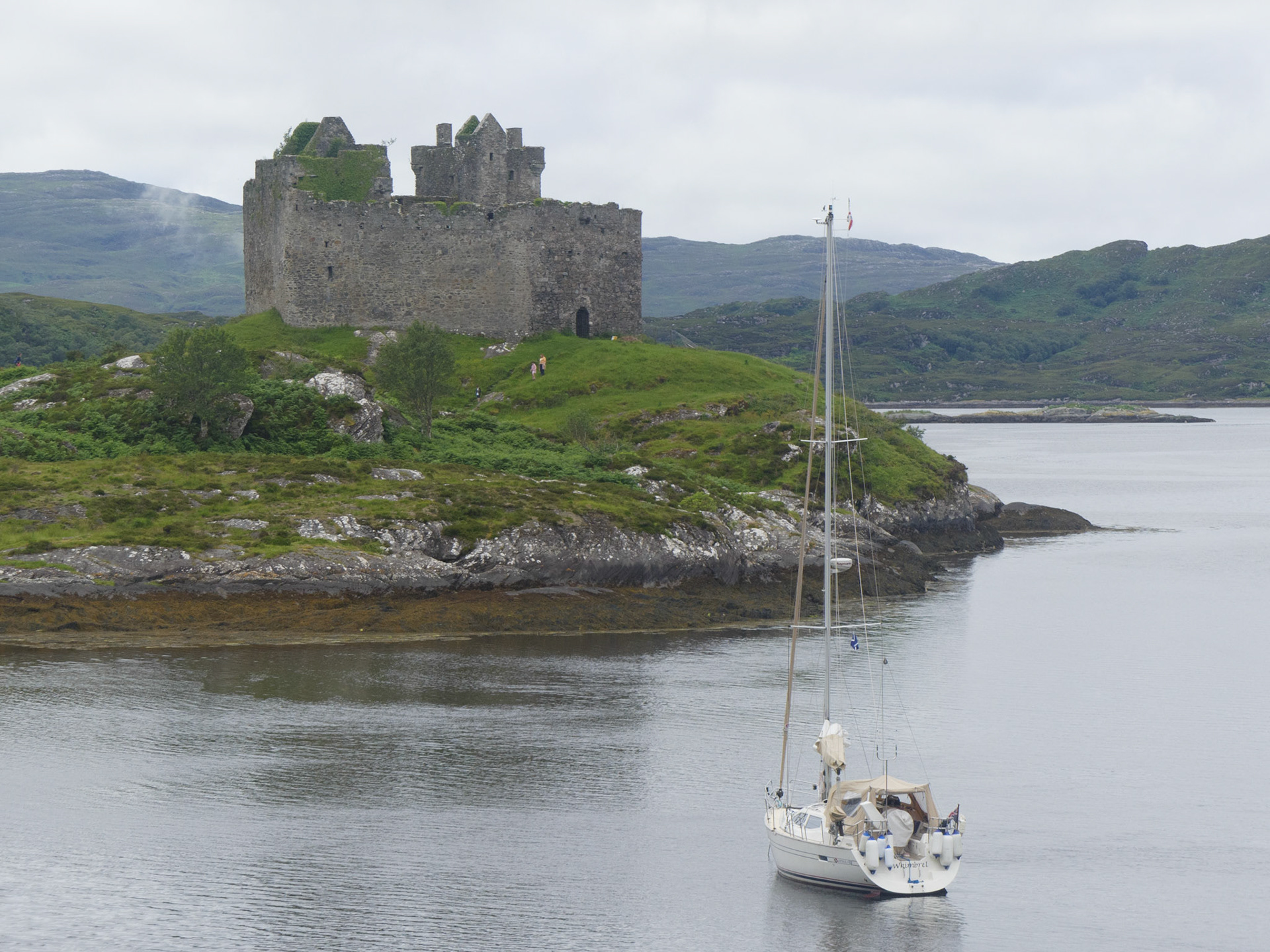
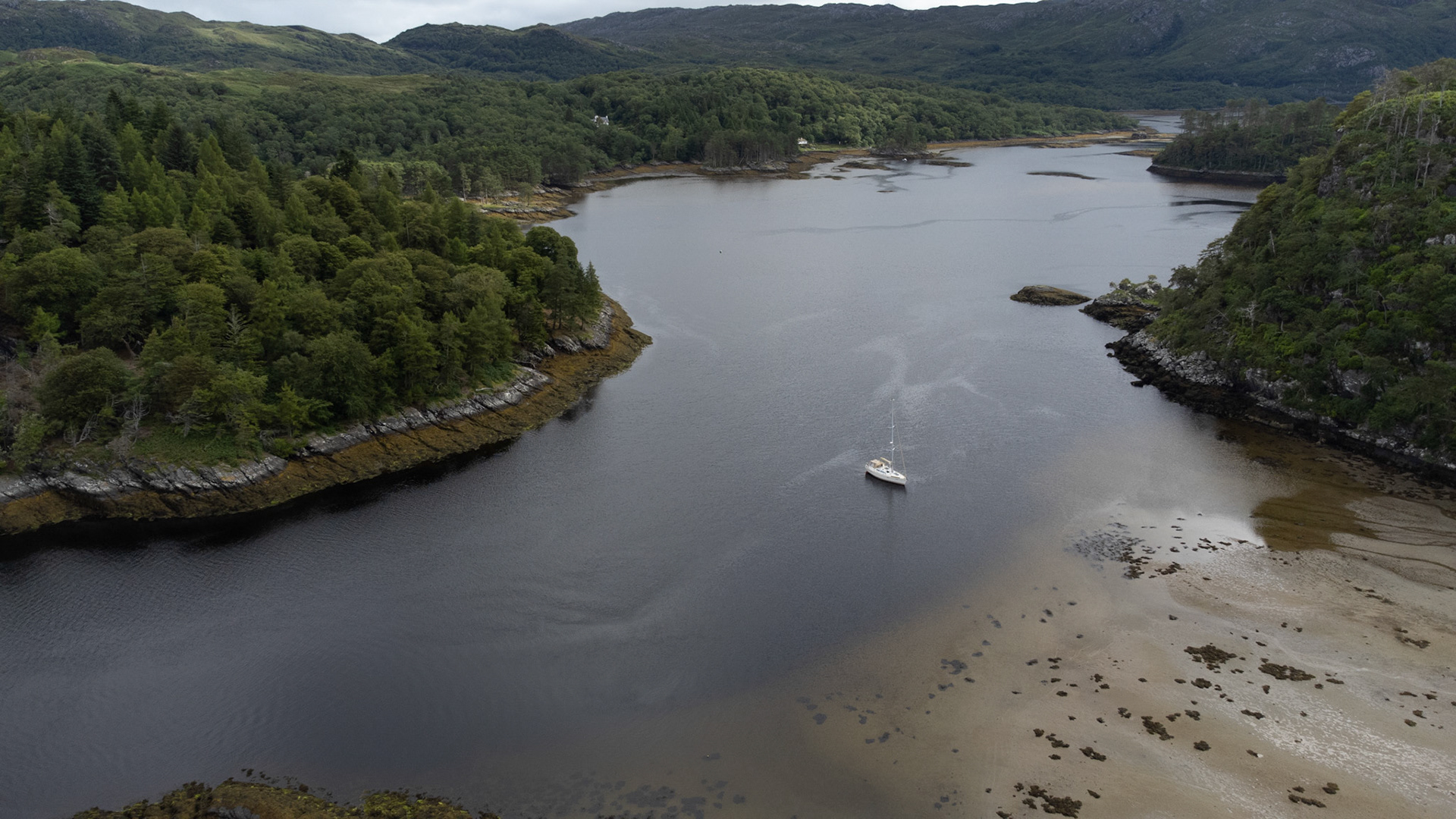
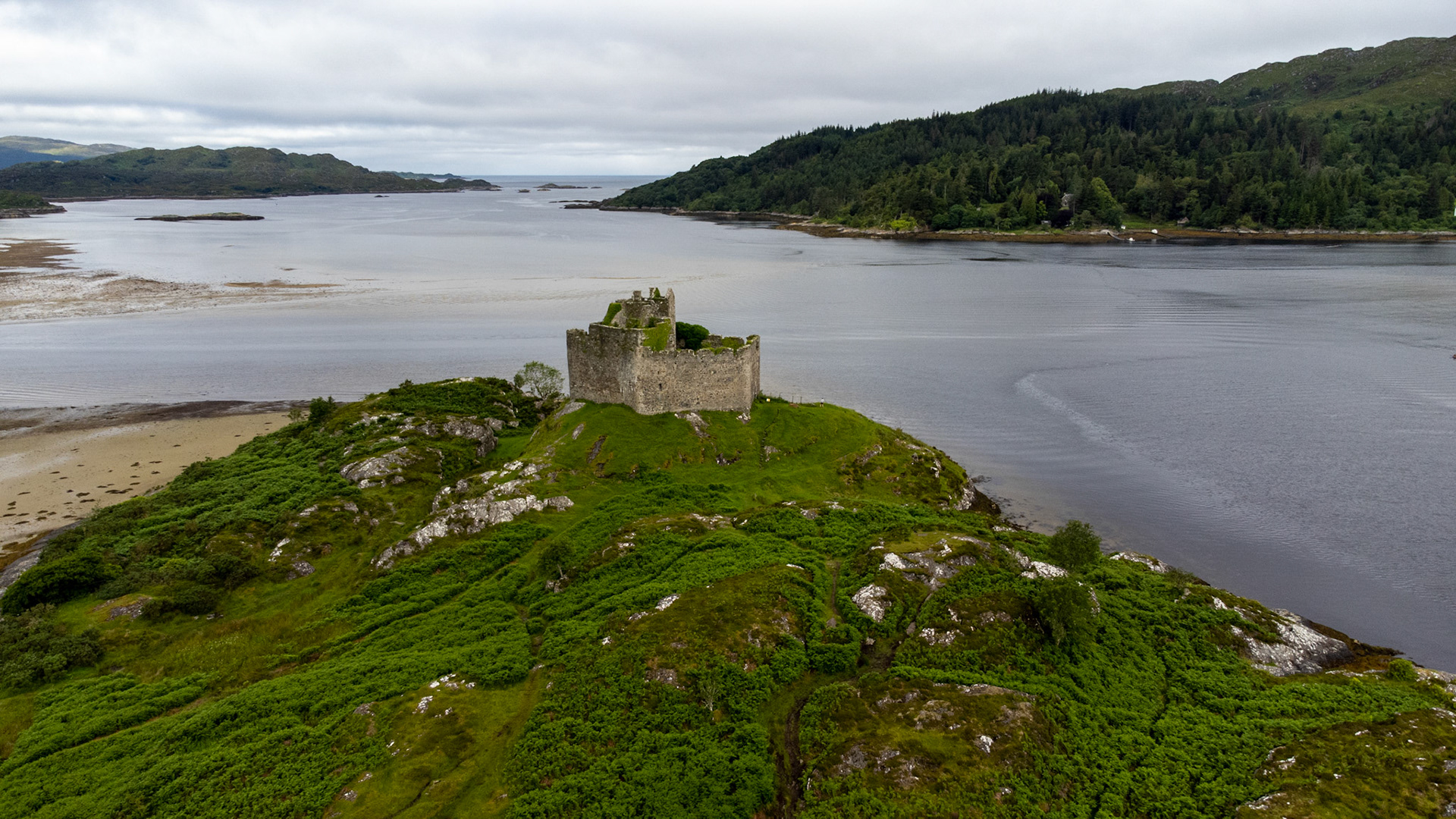
Castle Tioram

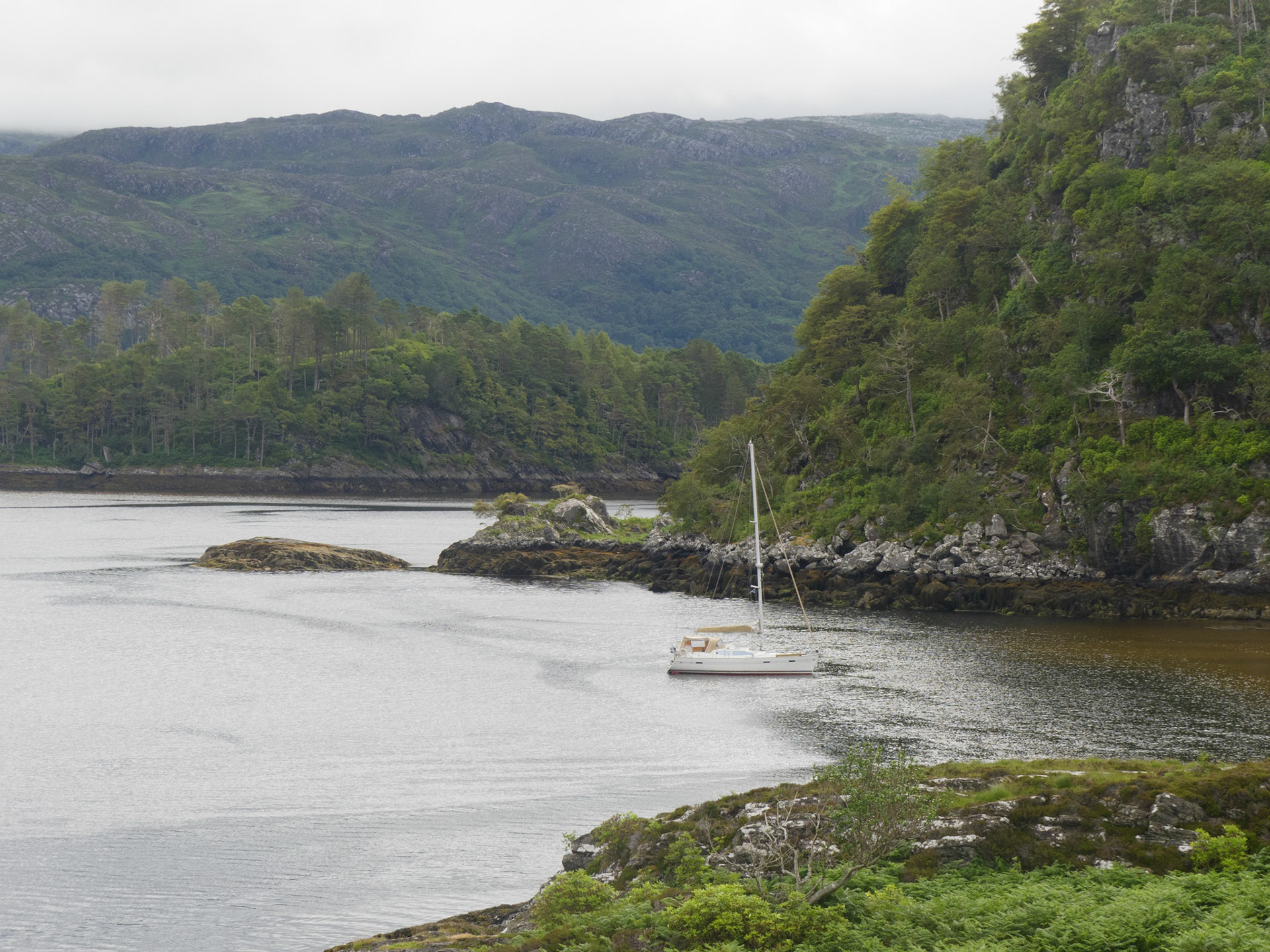
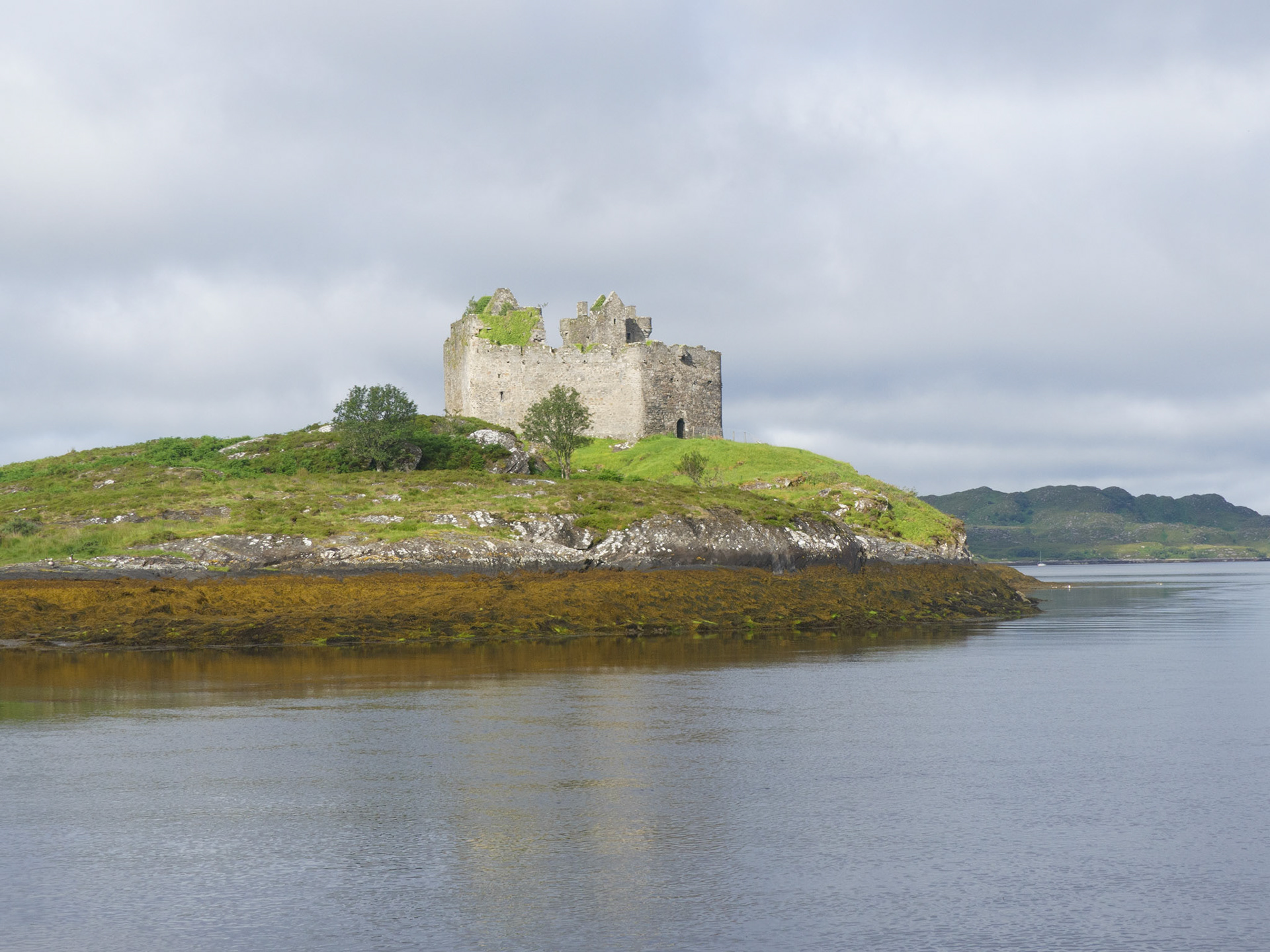
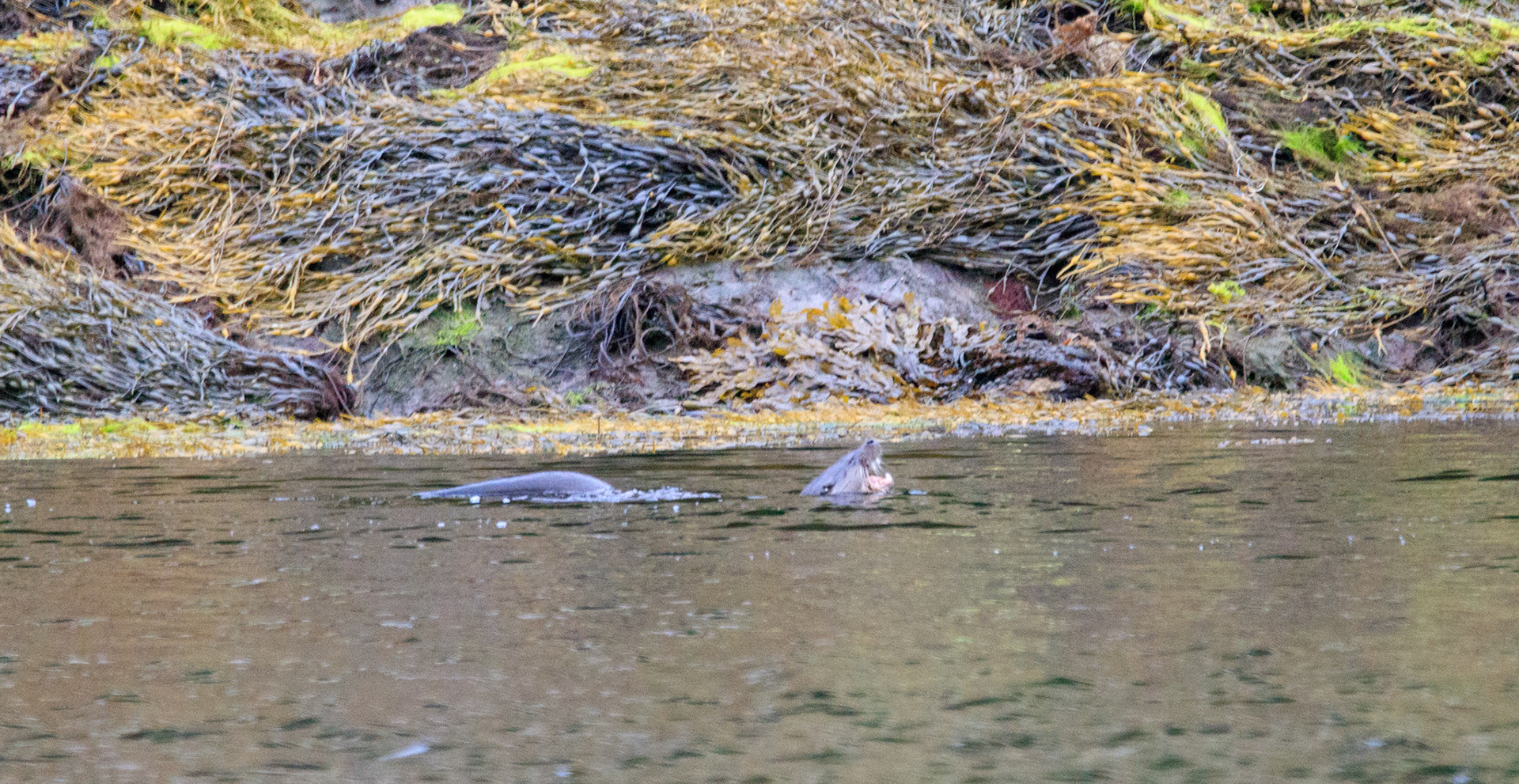
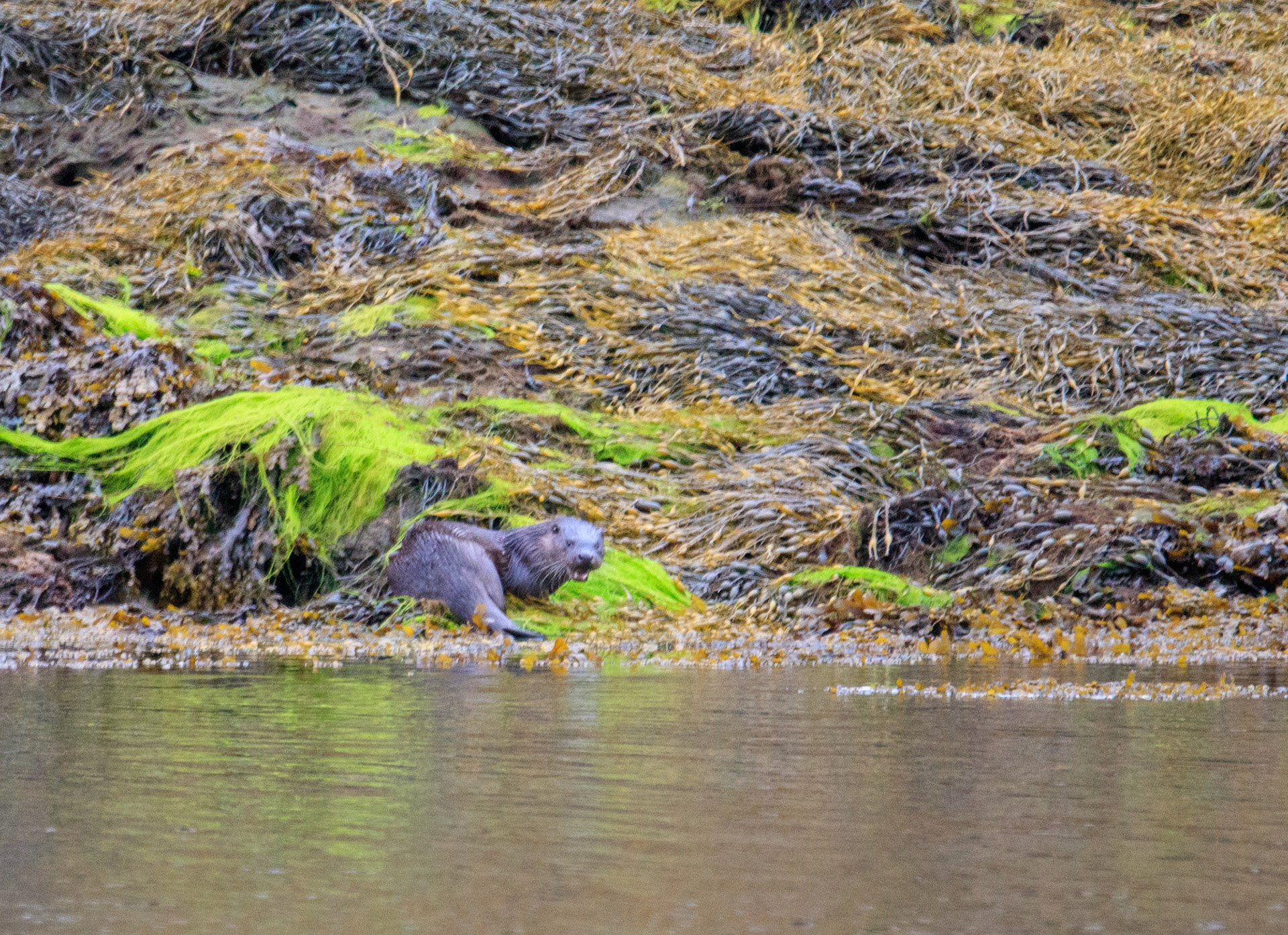
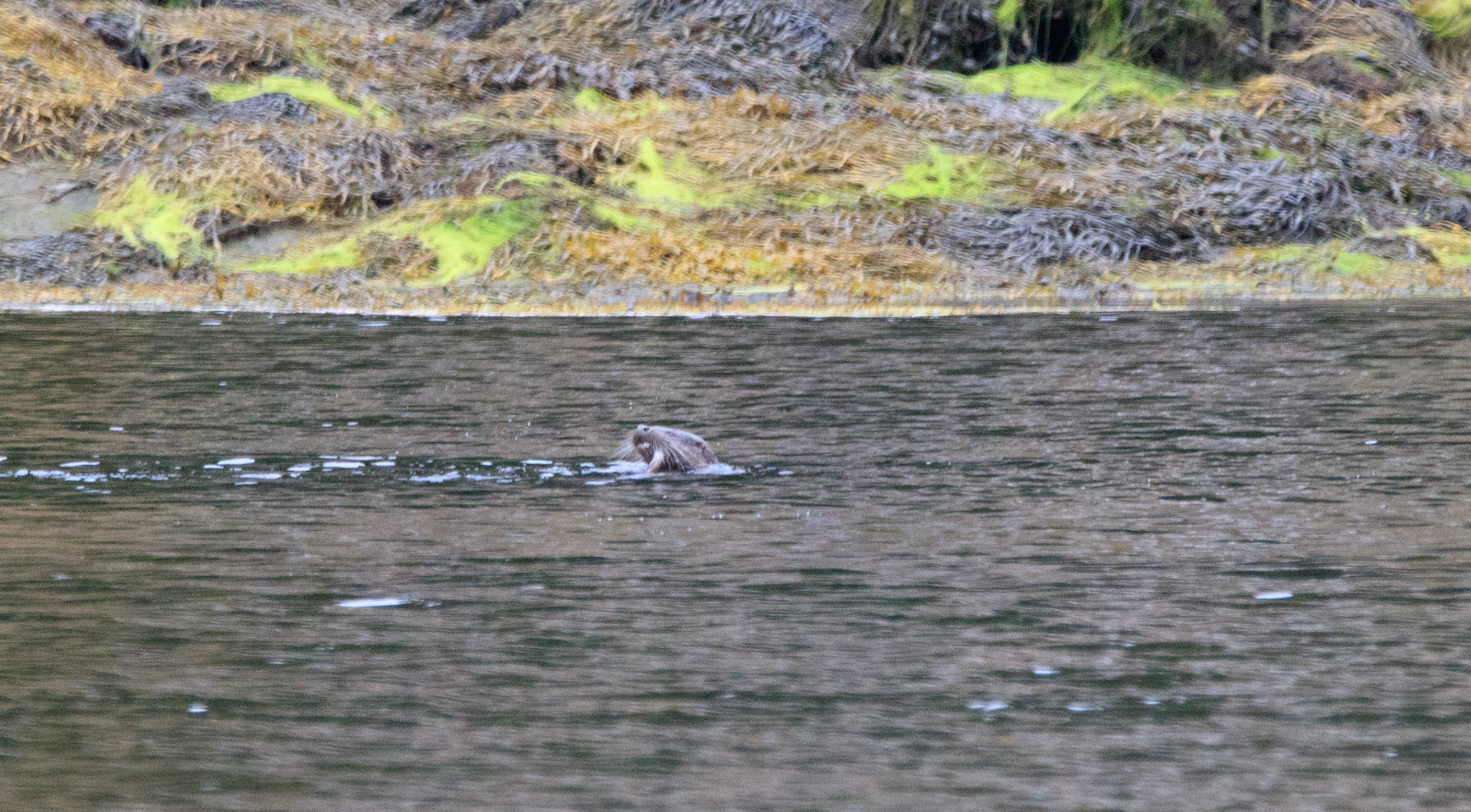

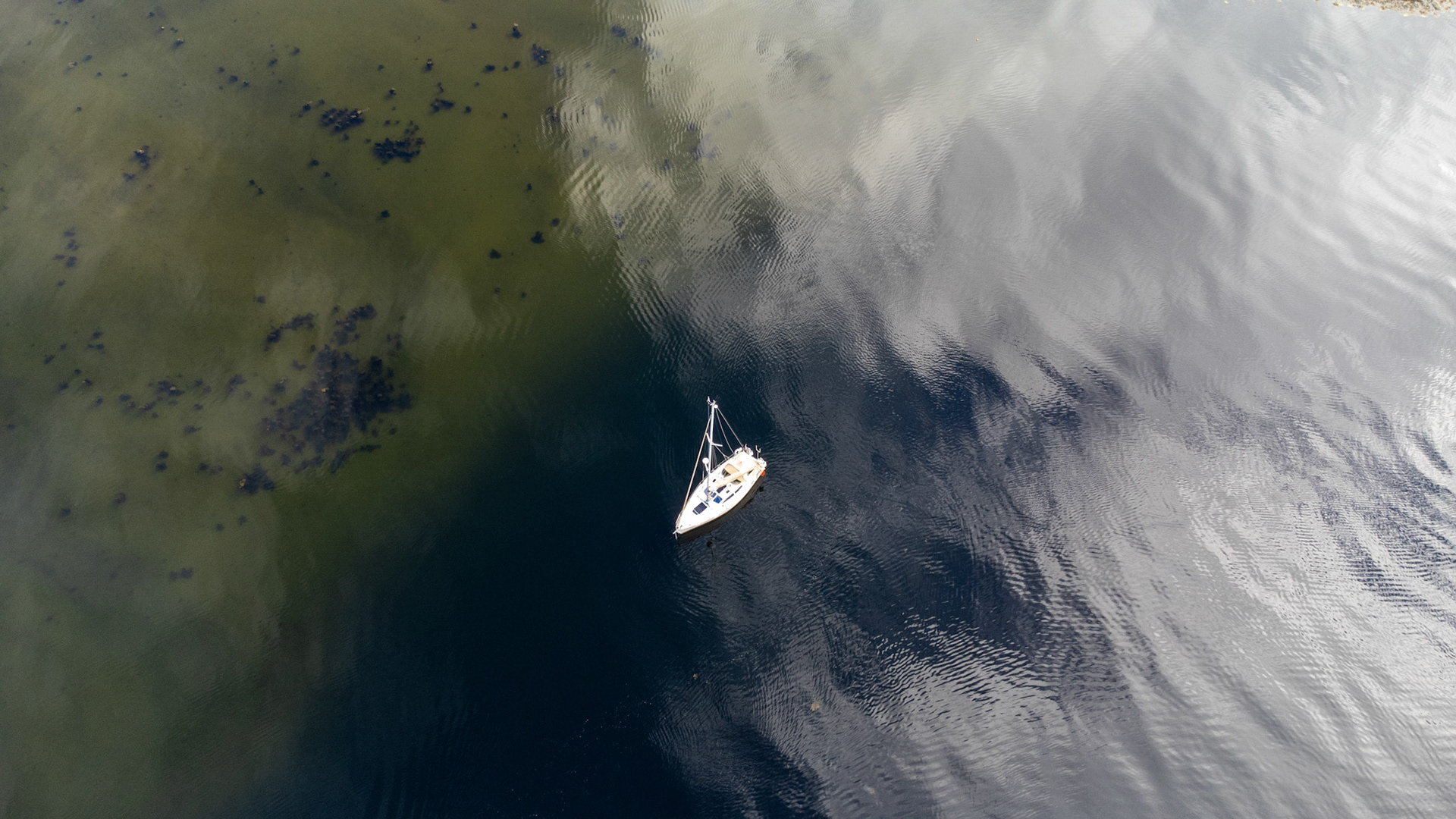
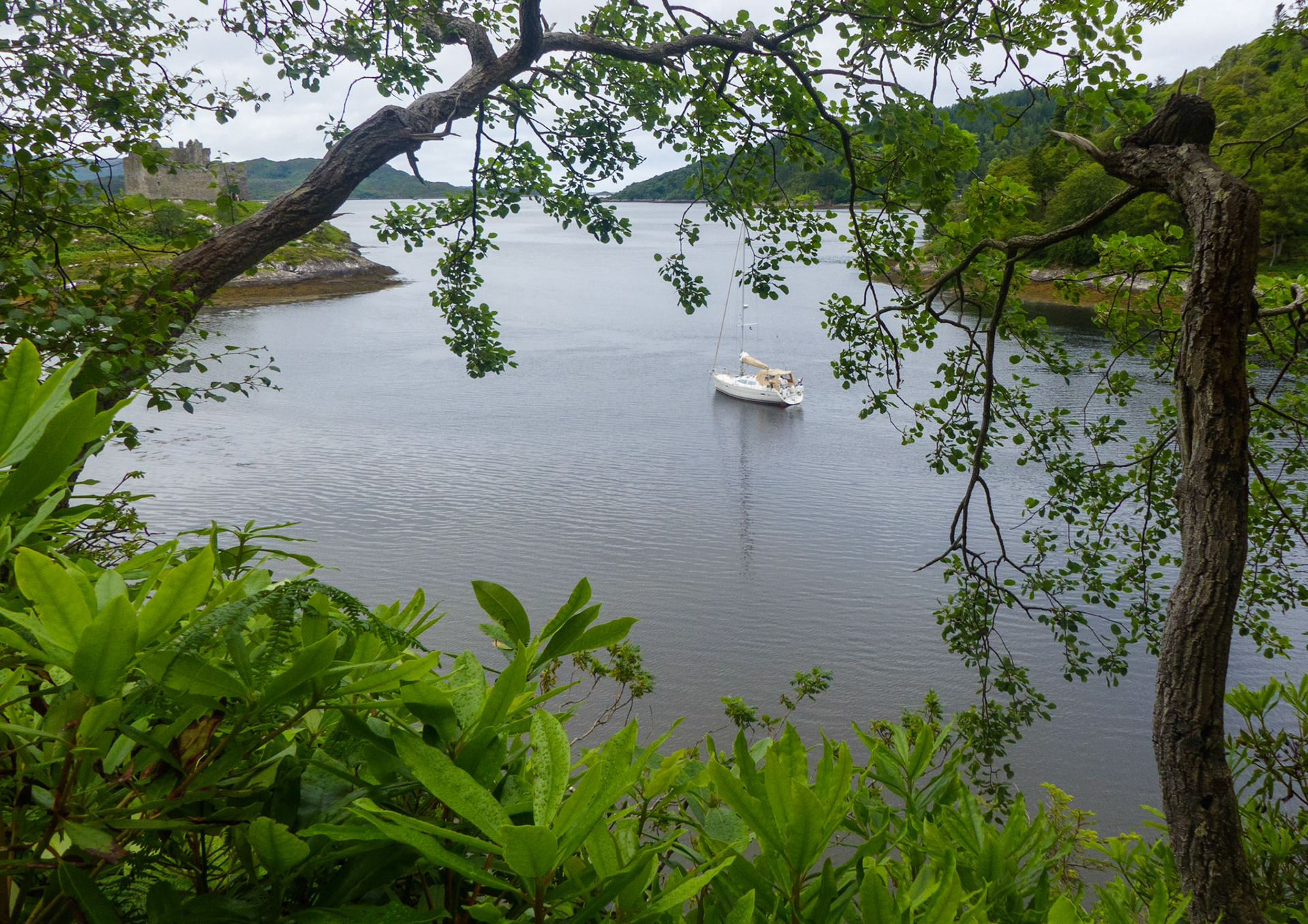
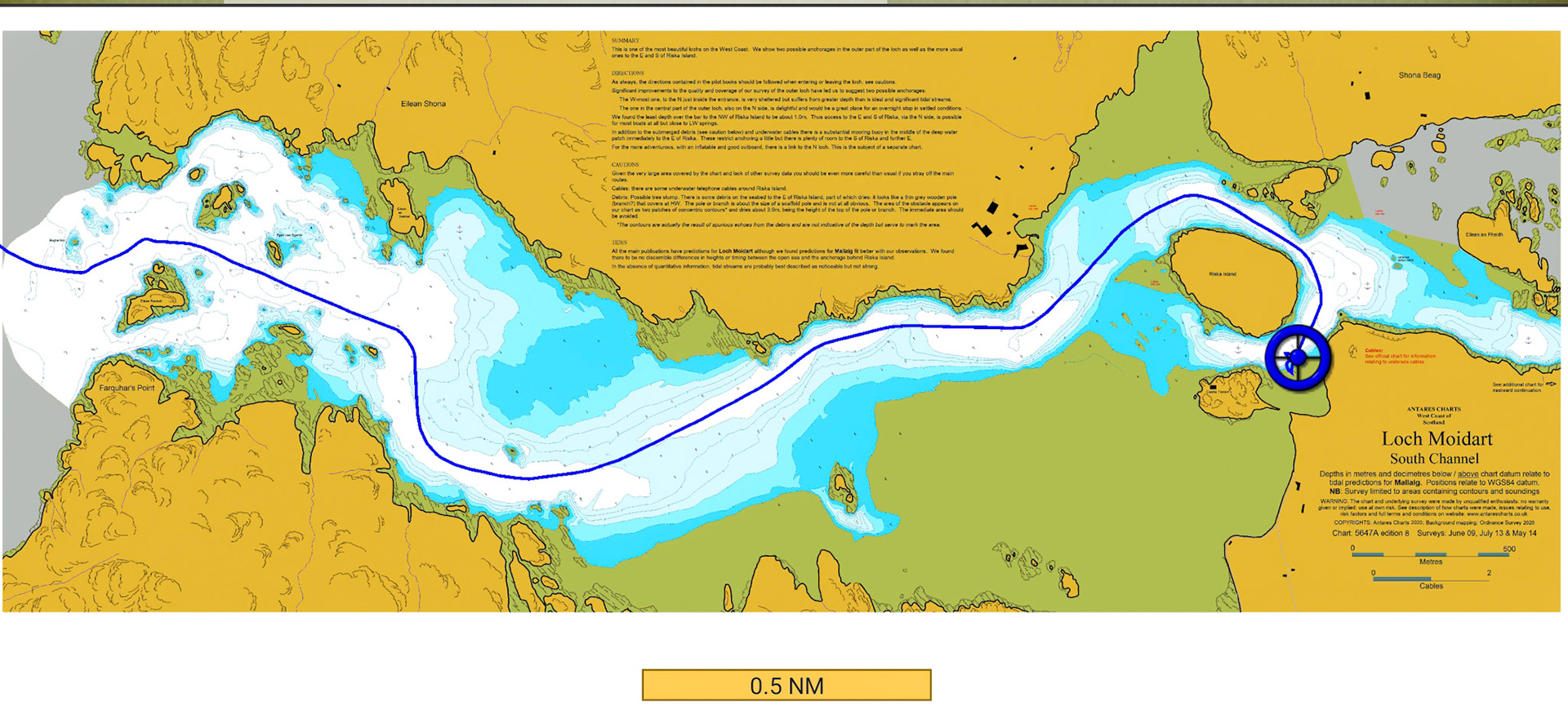
Our track into Loch Moidart useing the Antares charts. our Bible for Scotland
Monday 11th July saw us depart Loch Moidart for Canna, the most westerly of the Small Islands (Muck, Eigg and Rum). We had a gentle sail along the top of Eigg and Rum until we reached the west of Rum. From a 10 knot amble with full sail on a reach we were hit by gusts of 24Kts and building choppy seas. We quickly dropped the main and reduced the headsail to Reef 1 and sailed downwind towards the harbour at 6-7 kts. It was an exciting last hour of sailing before we entered the delightful and rather calmer Canna harbour. We picked up one of the 10 visitor moorings as the wind was due to increase for a couple of days and watched a few more yachts shoot into the harbour entrance and pick up the remaining few buoys. At least another 3 yachts tried to come in and had to anchor. The holding is not too good with thick matted seaweed and steeply shelving drying where the holding was better. Two yachts left later that evening from the anchorage, the first one broaching as it reached the ferry terminal - hopefully it had a safer onward passage.
On Tuesday we had a windy walk out to the Stacks to see the puffins as their young had fledged and they were about to depart for their watery 6 months of travel before finding their way back next year to their breeding grounds. Puffins have been ringed on this island for many years and it was recorded recently of a 31 year old Puffin still returning to this favourite area. The fishing must be good. On our walk the following day took us to the west and north of the island, where we spotted a golden eagle soaring above the cliff tops. We also heard the mournful bark of the seals – it really is a haunting sound.
A recommended visit to the licensed Café Canna for supper on Wednesday evening did not disappoint. The freshly caught crab and mackerel were outstanding and the ale and wines to match were perfect. I was even allowed to row back from the café to Whimbrel as the wind had finally dropped and the sea was reasonably calm! The only shower available to yachtsmen was situated on the local farm – basic with no changing room but lovely and hot with 3 minutes for £1. There is a community store with honesty box open 24/7 for all basic needs – eat your heart out Tescos!
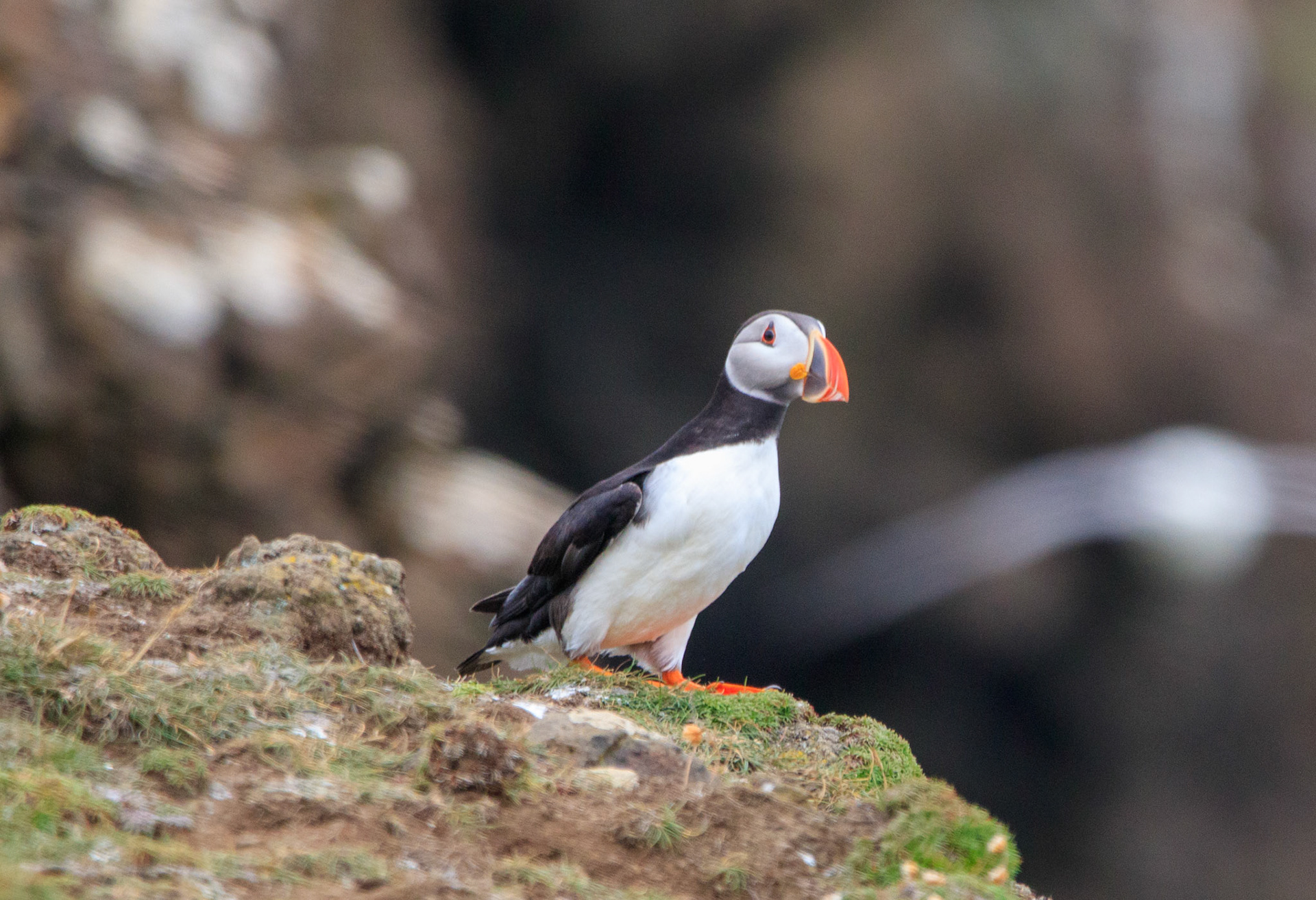
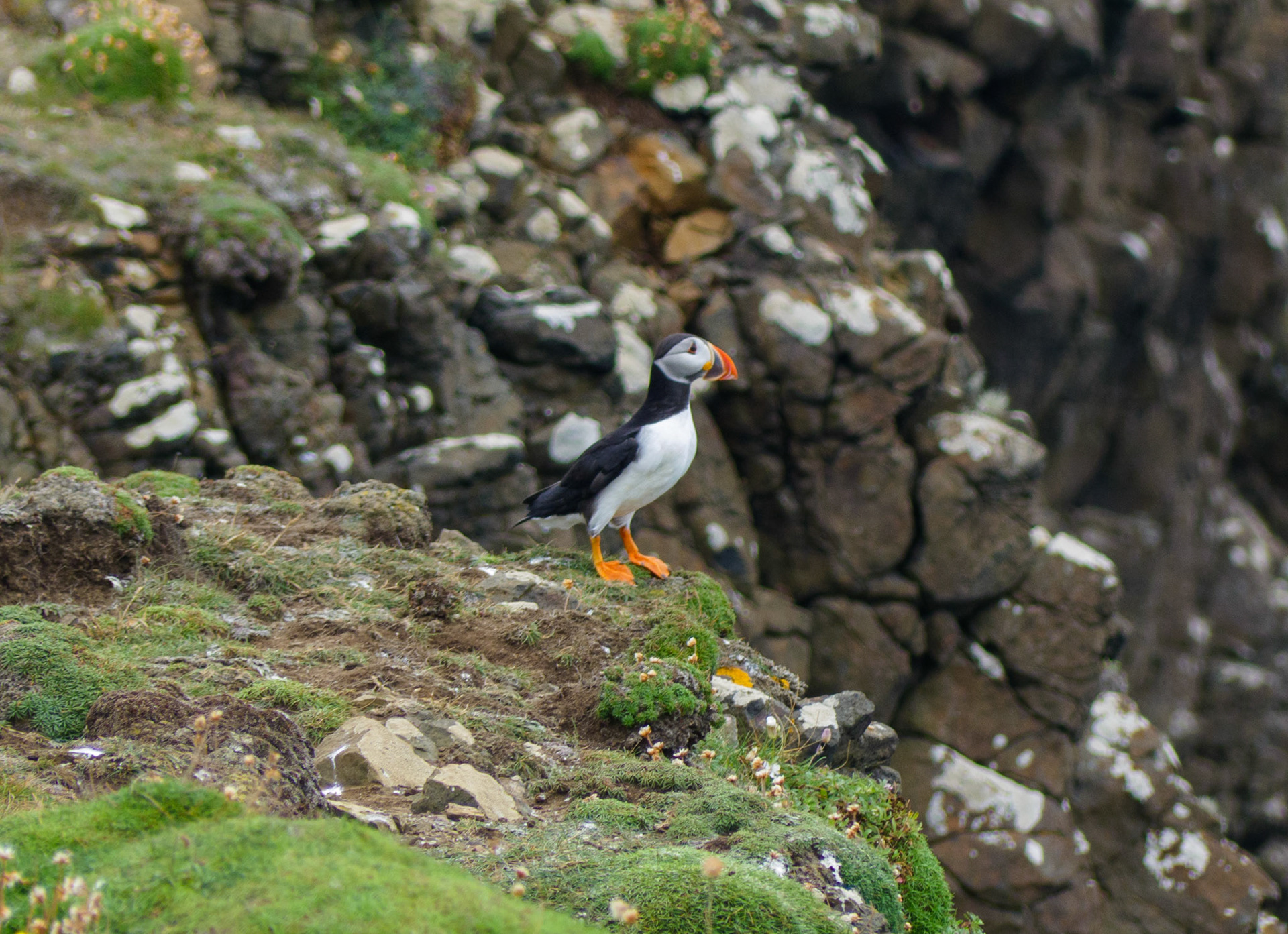
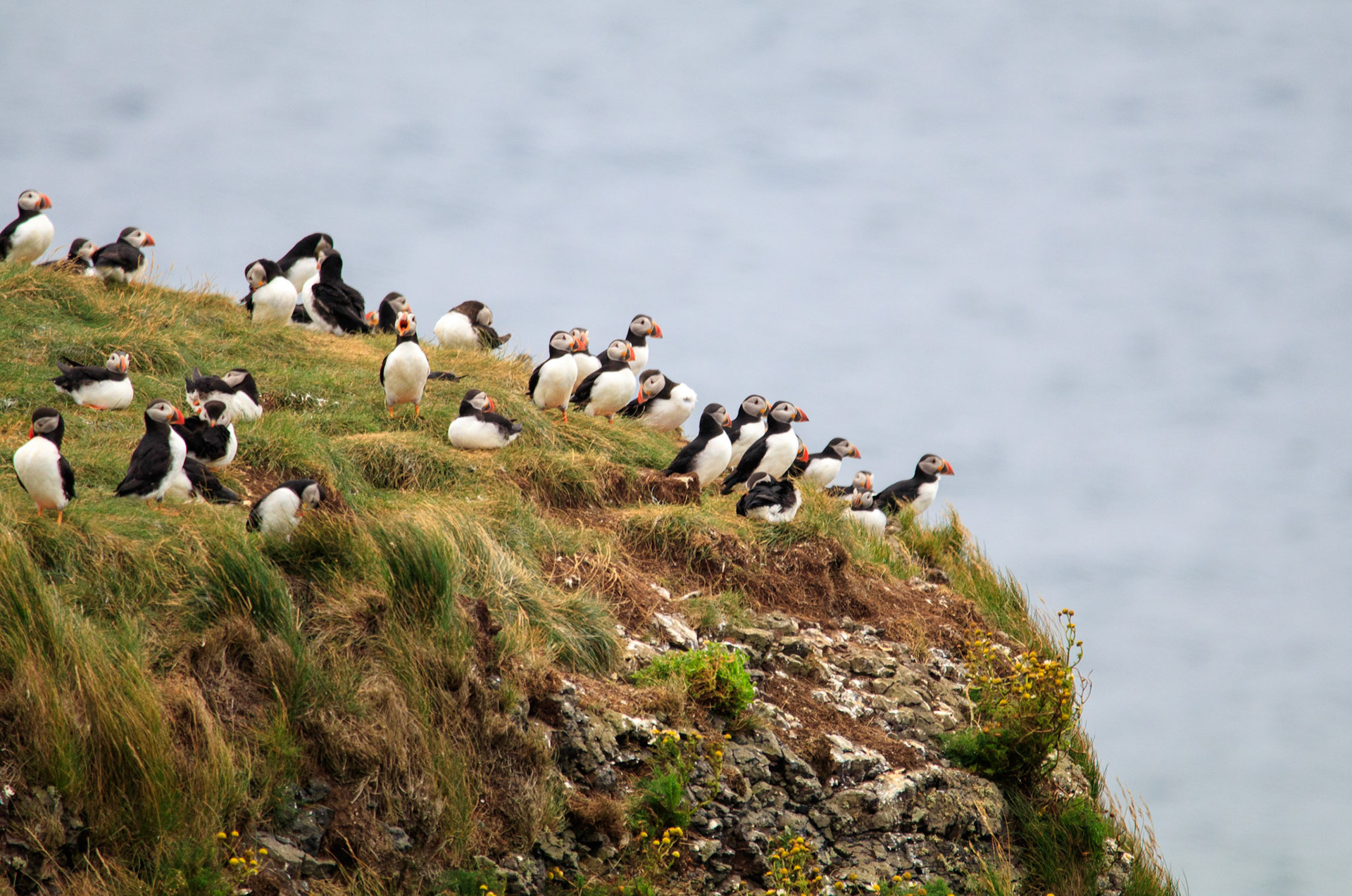
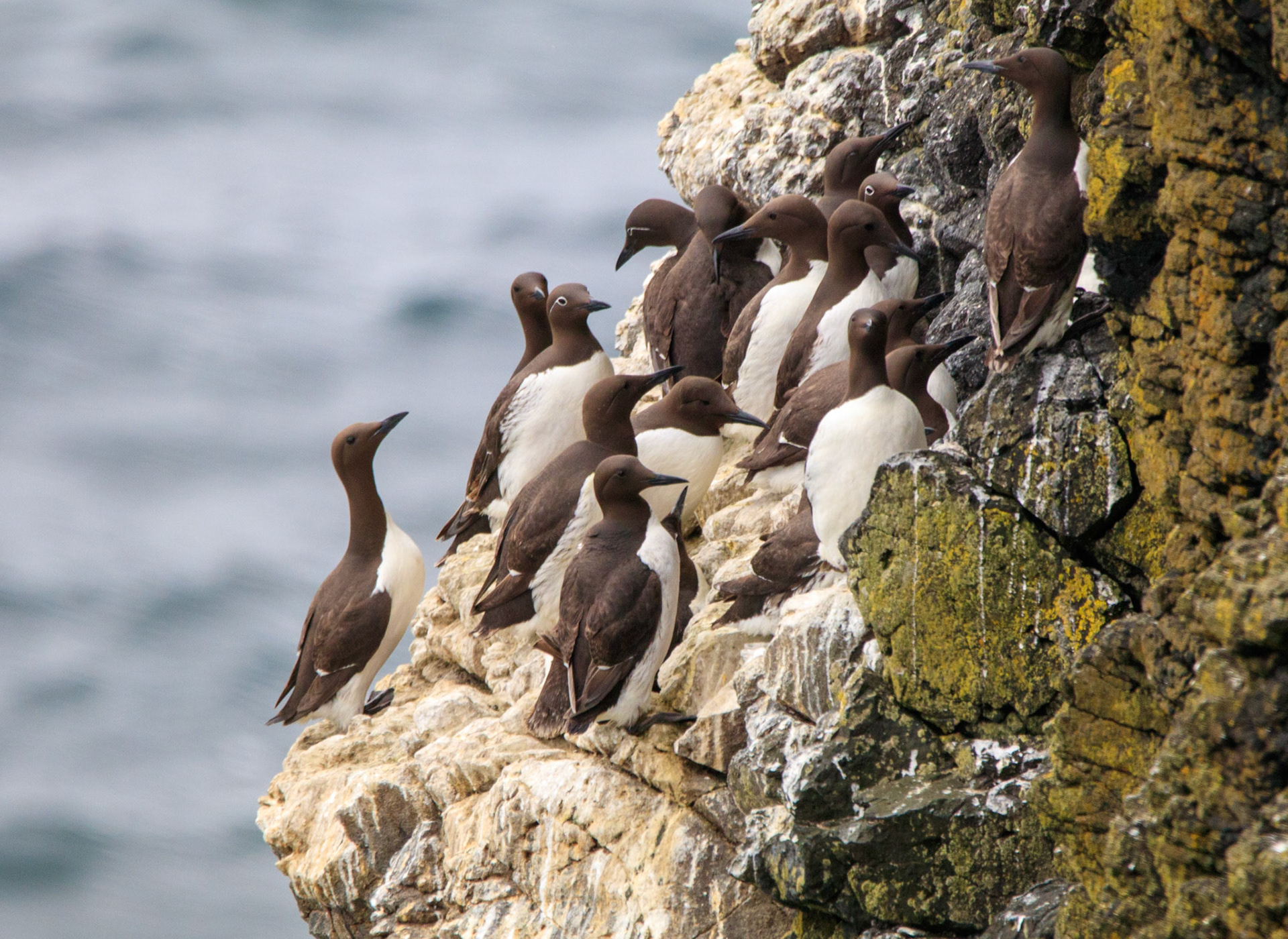
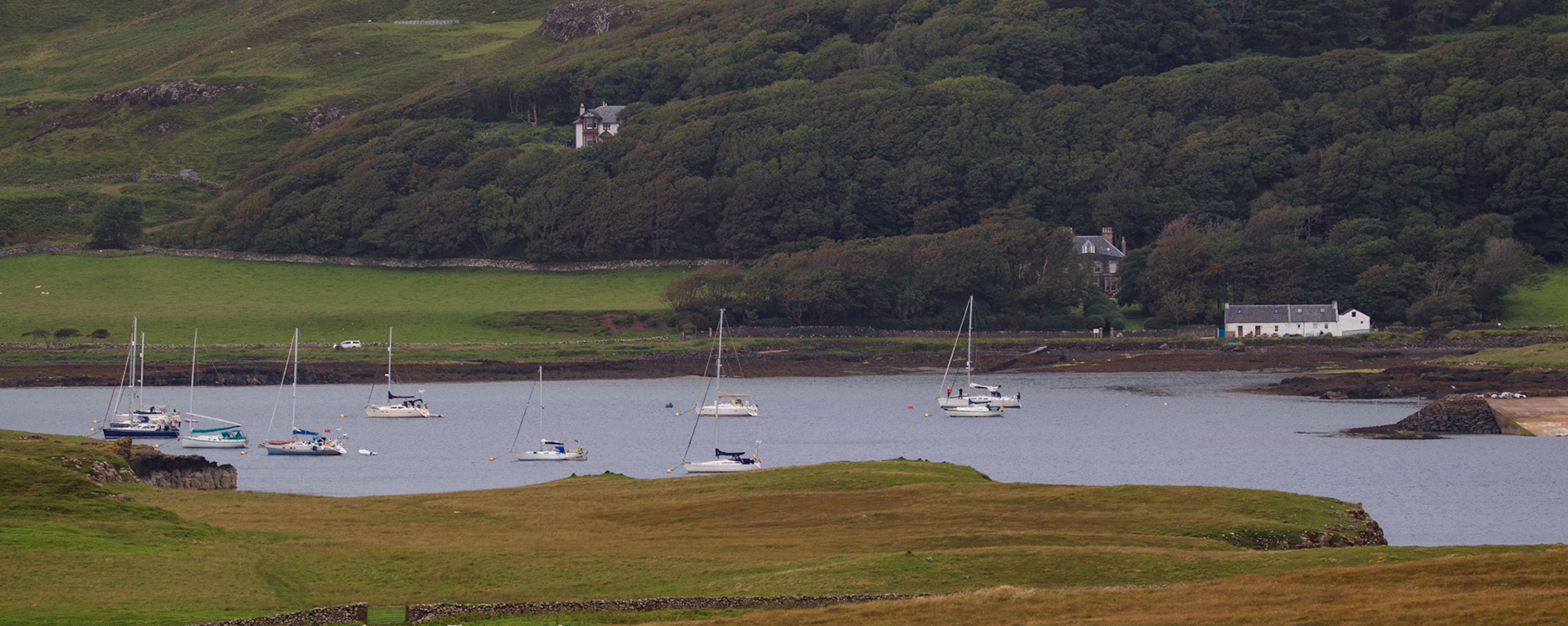
Cafe Canna and the Harbour
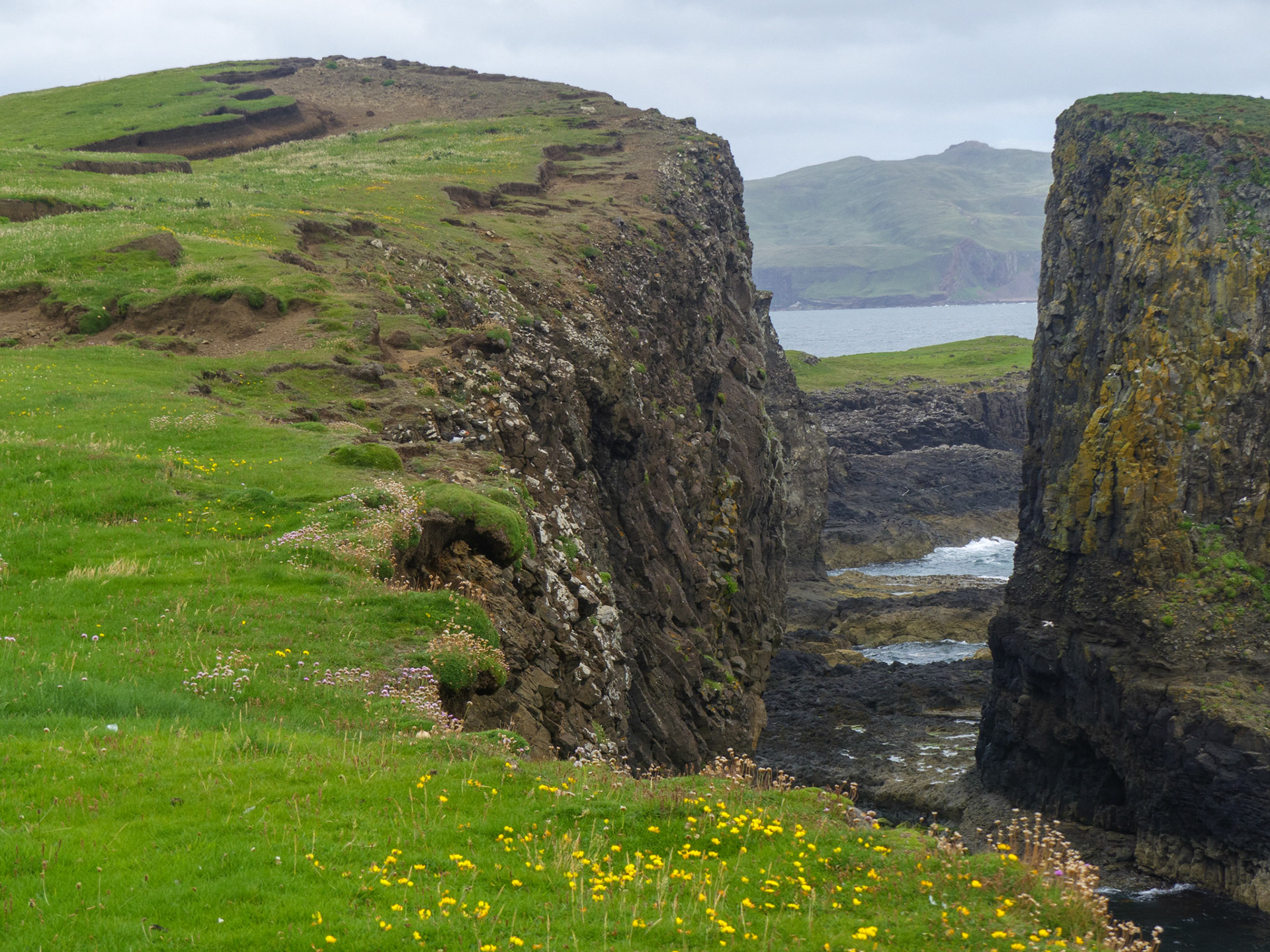
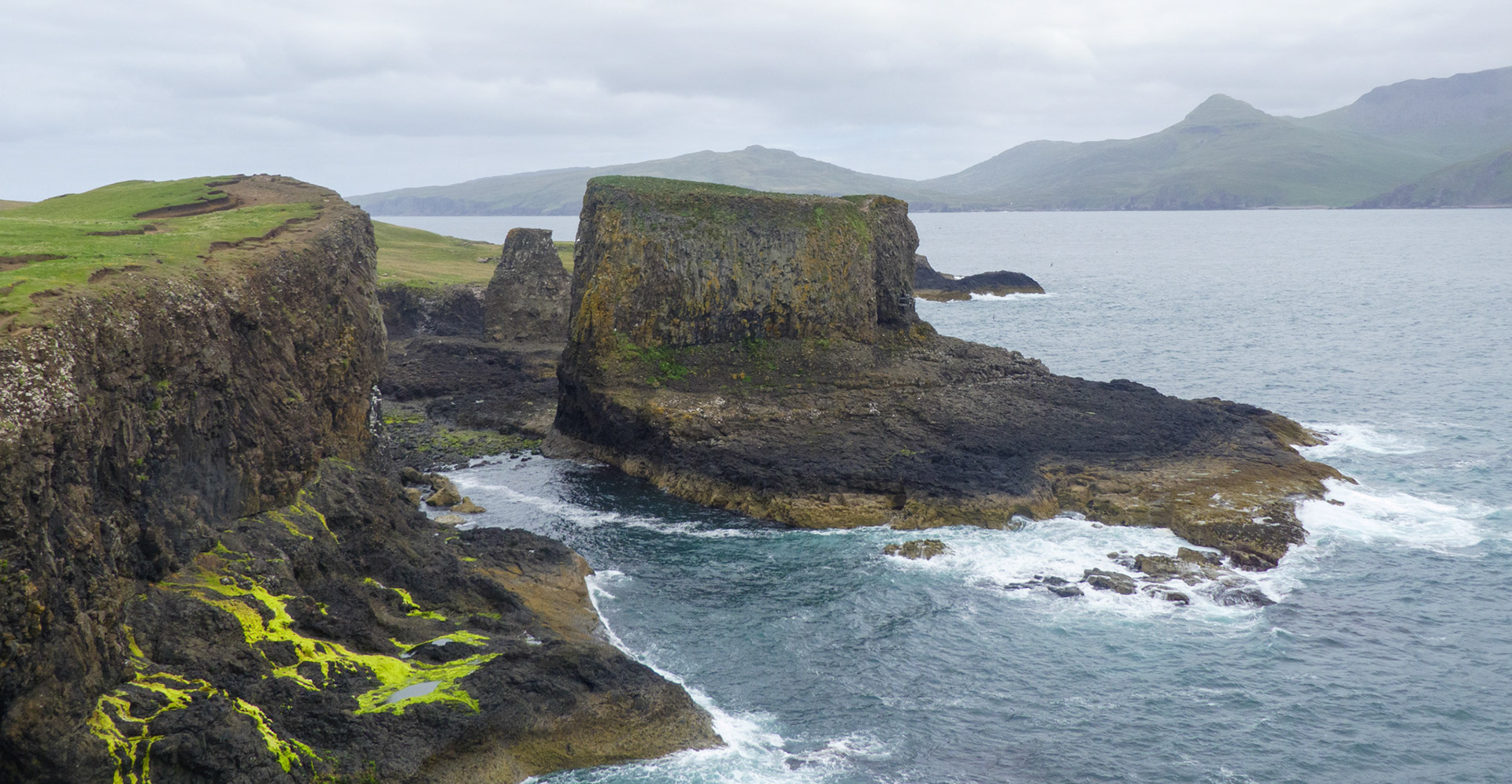
The Puffin Stack
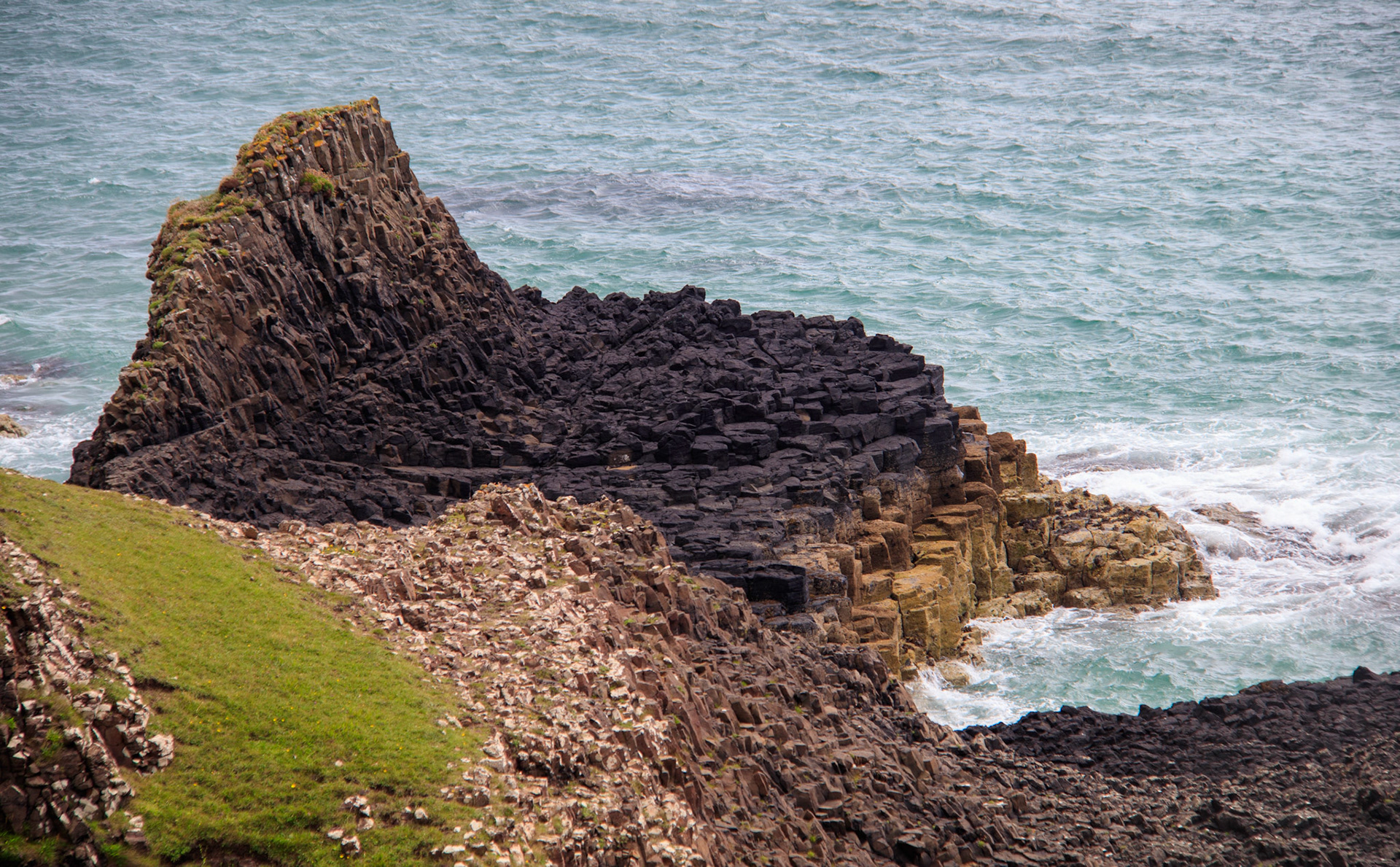
A weather window the next morning saw us depart from Canna and sail towards the Sound of Sleat (pronounced Slate). A fellow yachtsman had given us a few options for further anchorages and we decided on Isleornsay, half way up the Sound of Sleat on the Isle of Skye. It was a good sail up the Sound and we spotted 2 whales, one of which was so huge we thought it could have been an Orca! However it was chucking it down with rain so no photos. We anchored in 5.5 metres to the South Western end of the bay, raised the keel as the range was 4.4mtres as we did not fancy grounding there. The holding was good.
The weather, offering the usual Scottish summer of dreich to wet gave us a quick interval to walk across the causeway to Isleornsay, walk up the road to a delightful delicatessen and licenced community café and on return sample the £4.20 a pint local ale. 2 nights in this lovely anchorage but with the possibility of another 2 days of rain and wind caused us to rethink our plans (I was getting grumpy!) and we left with the flood down the Sound of Sleat to Mallaig. We need to stay in Mallaig for a few days as Nick heads South on Tuesday 19 July – heatwave and trains permitting.
